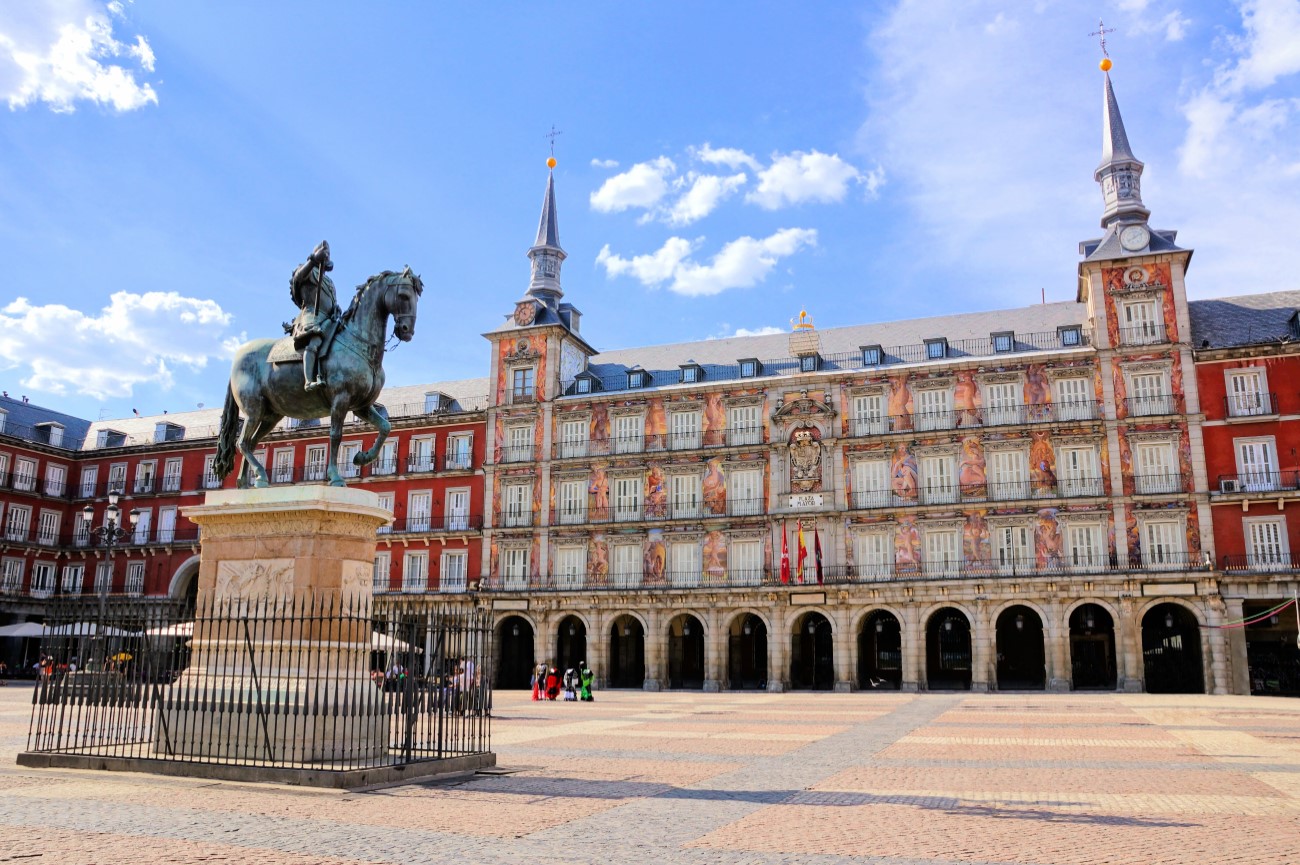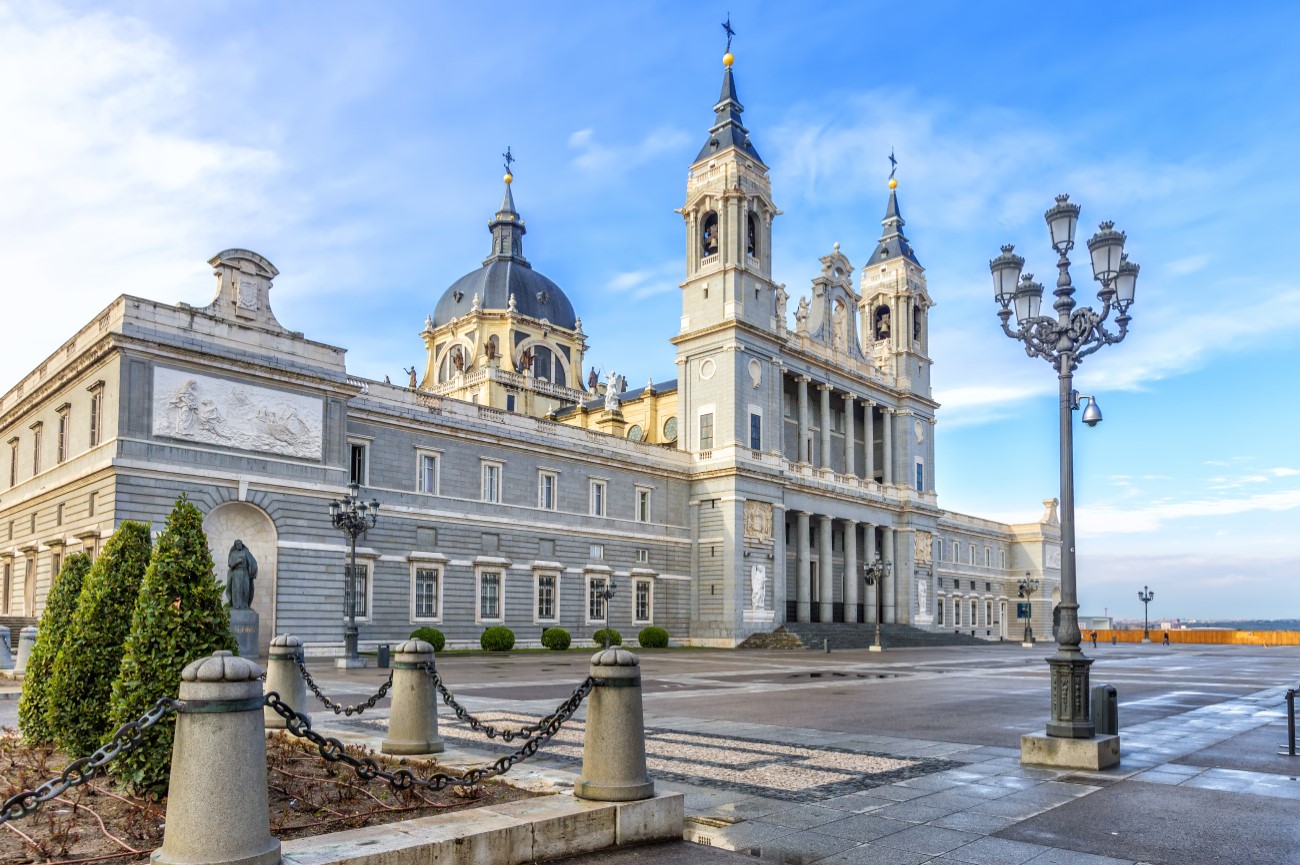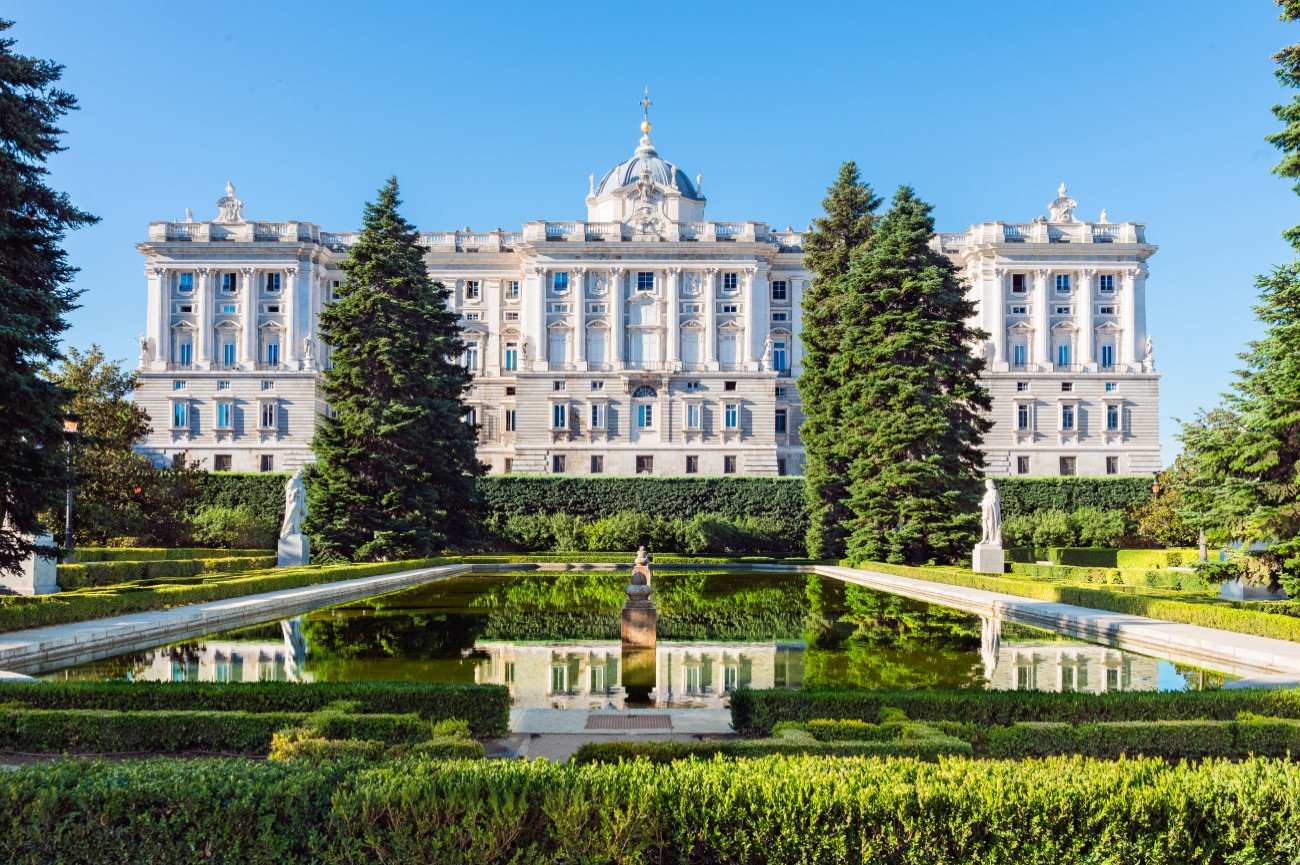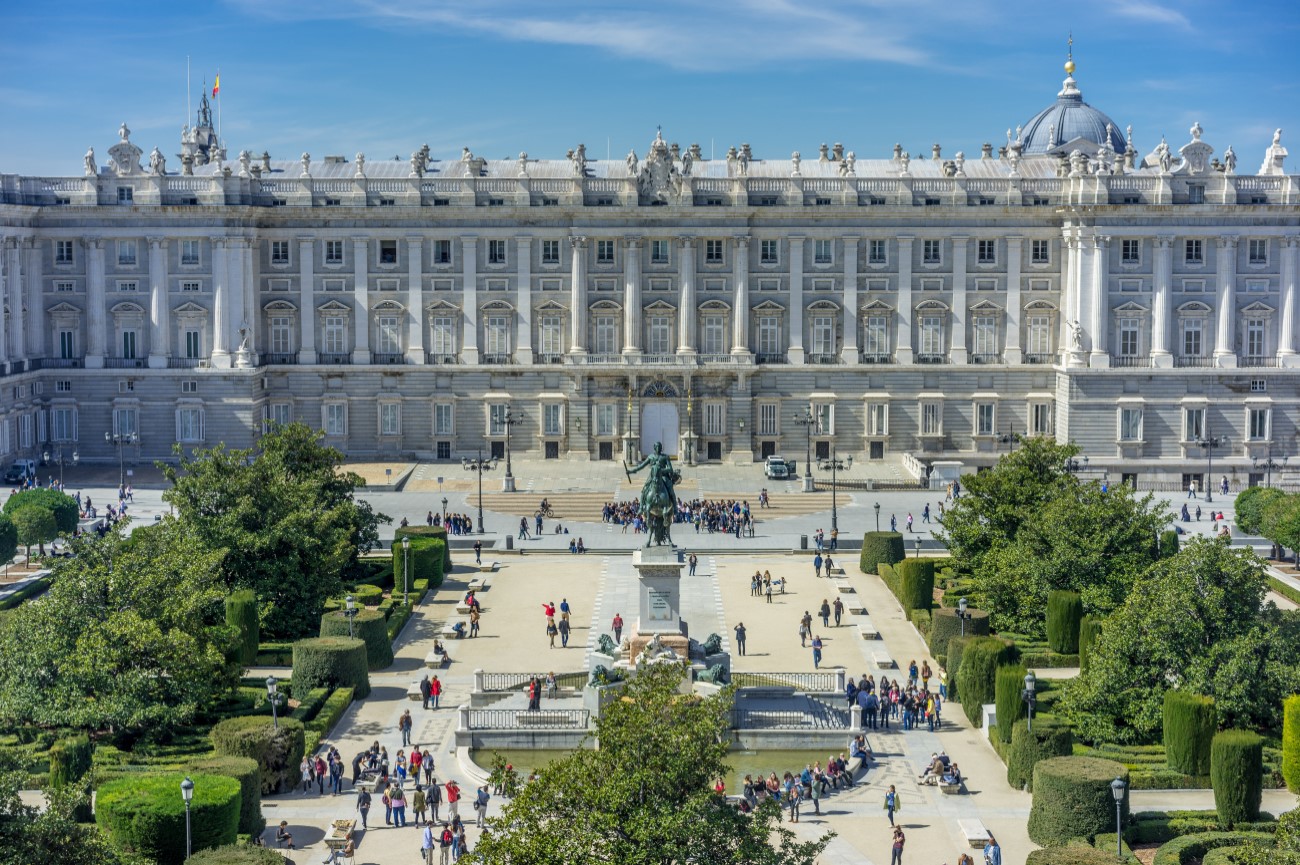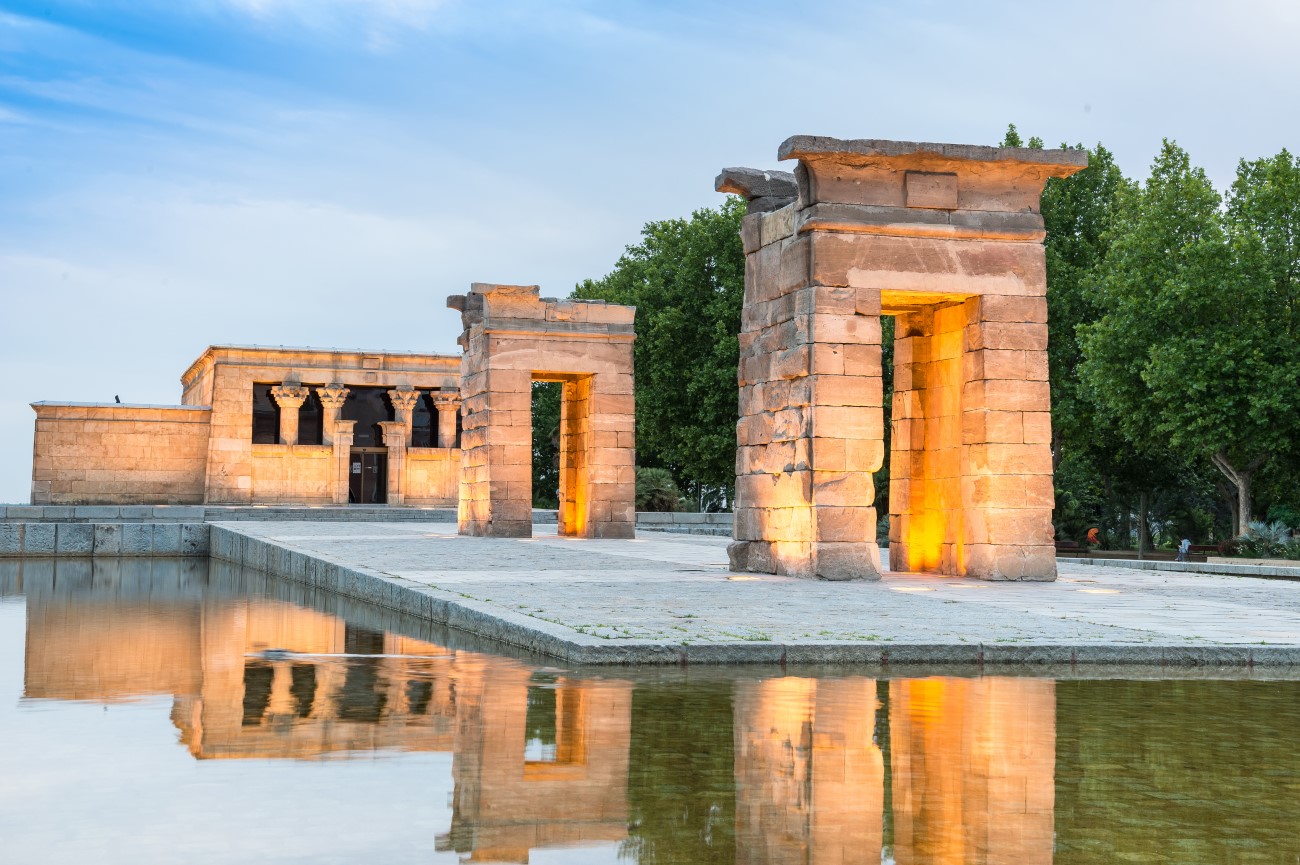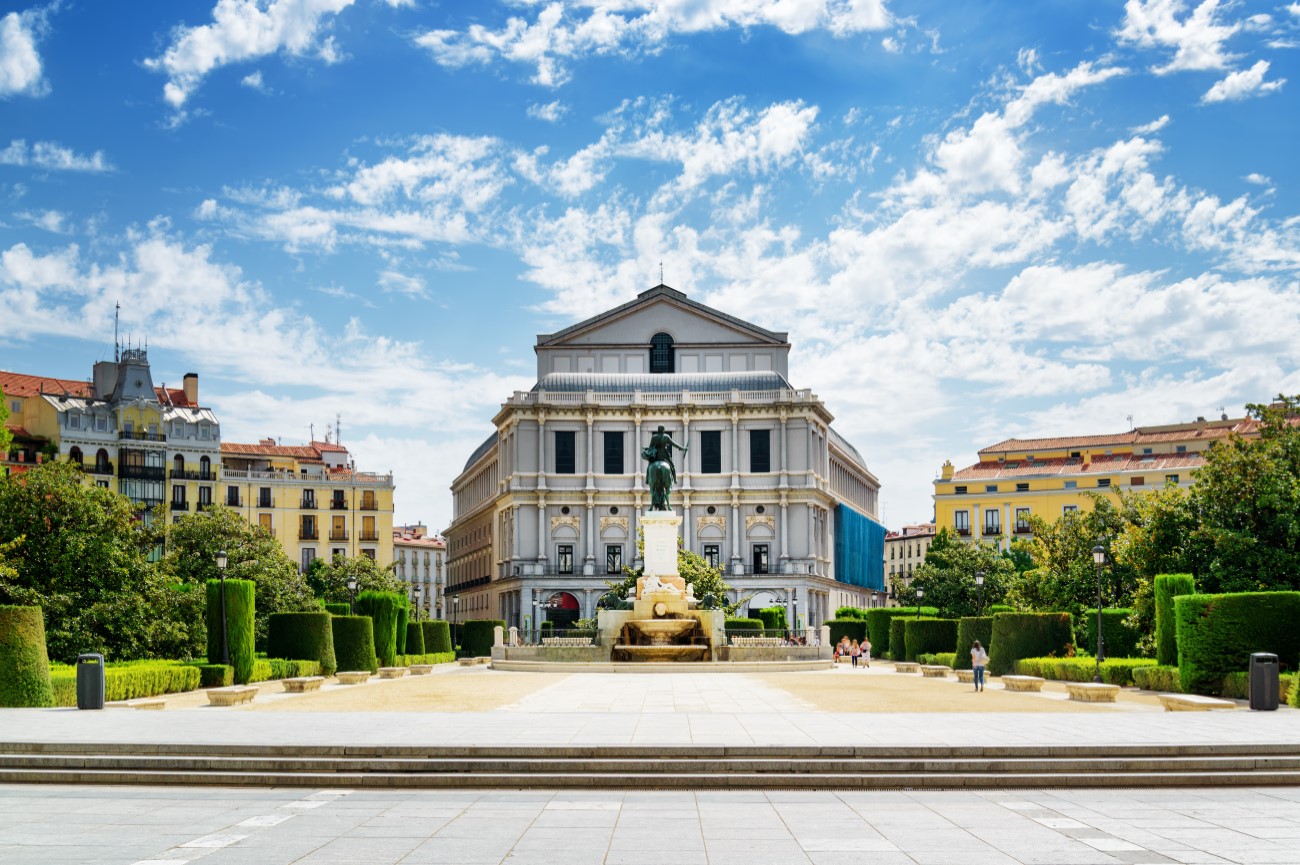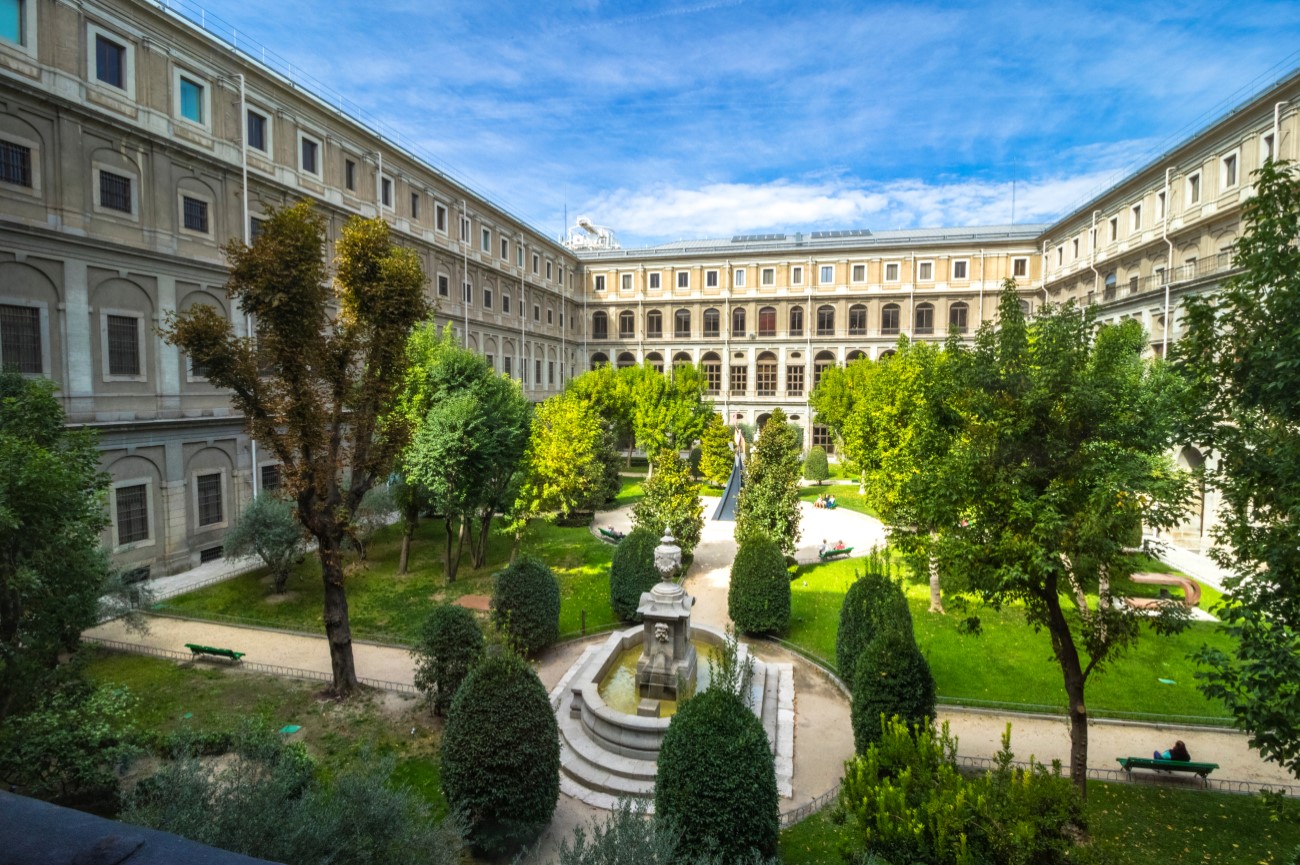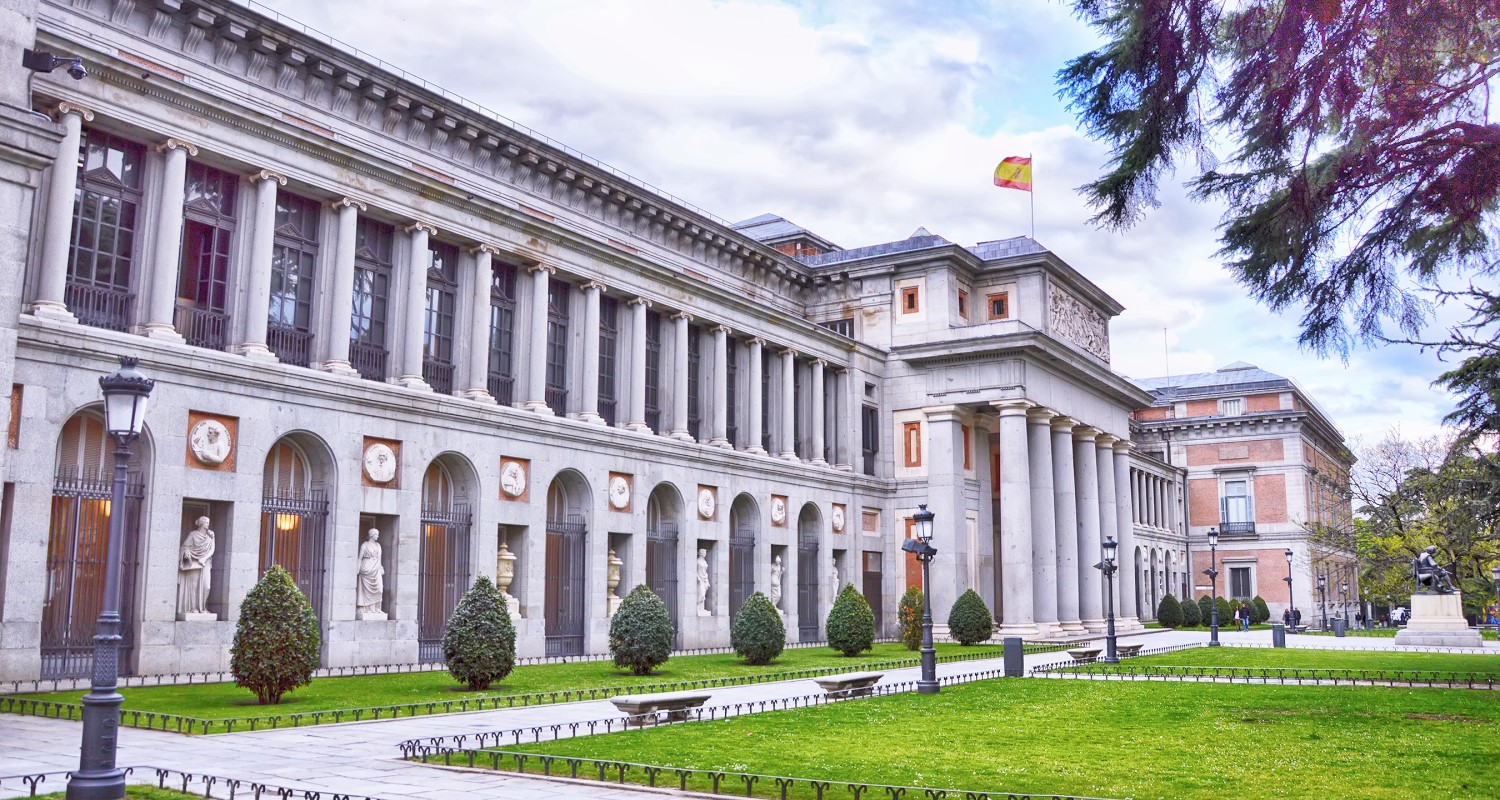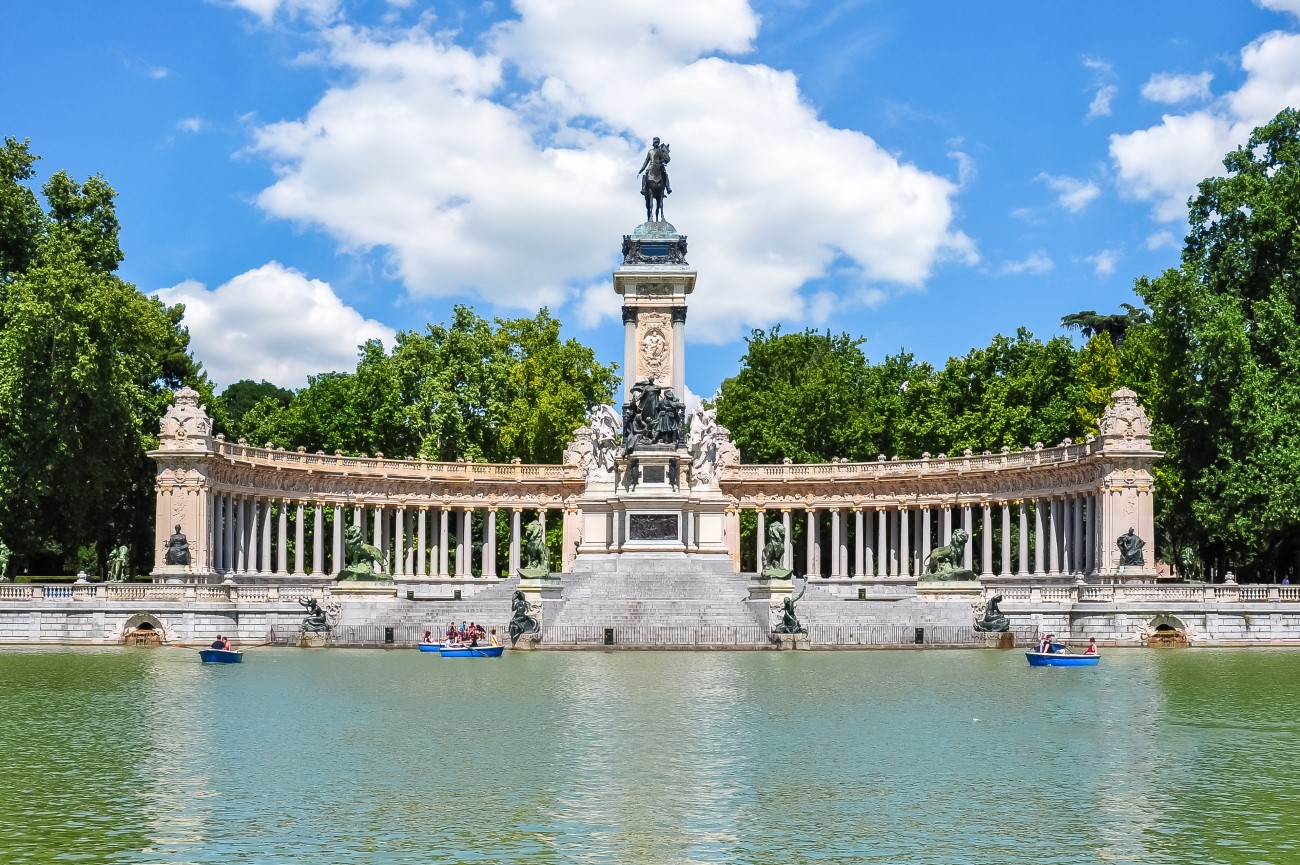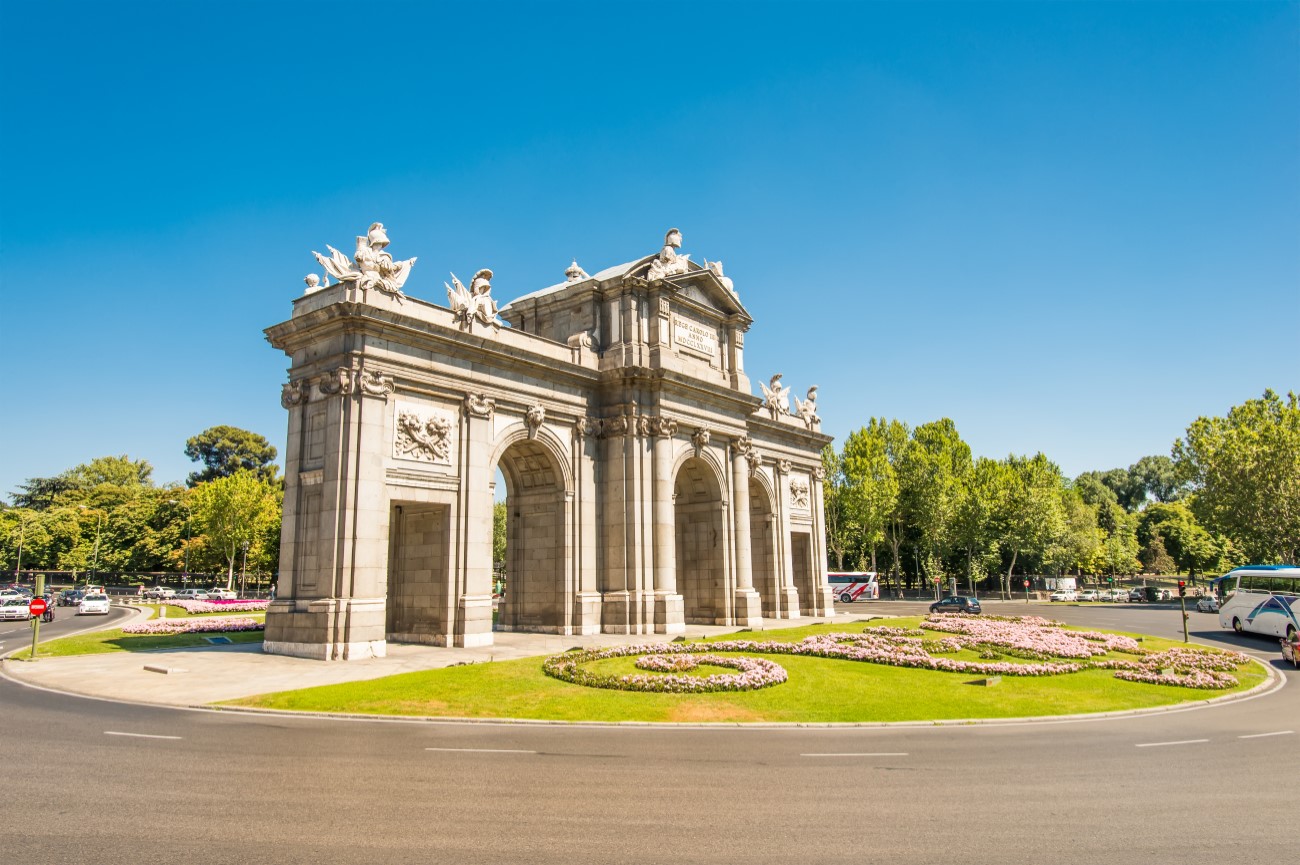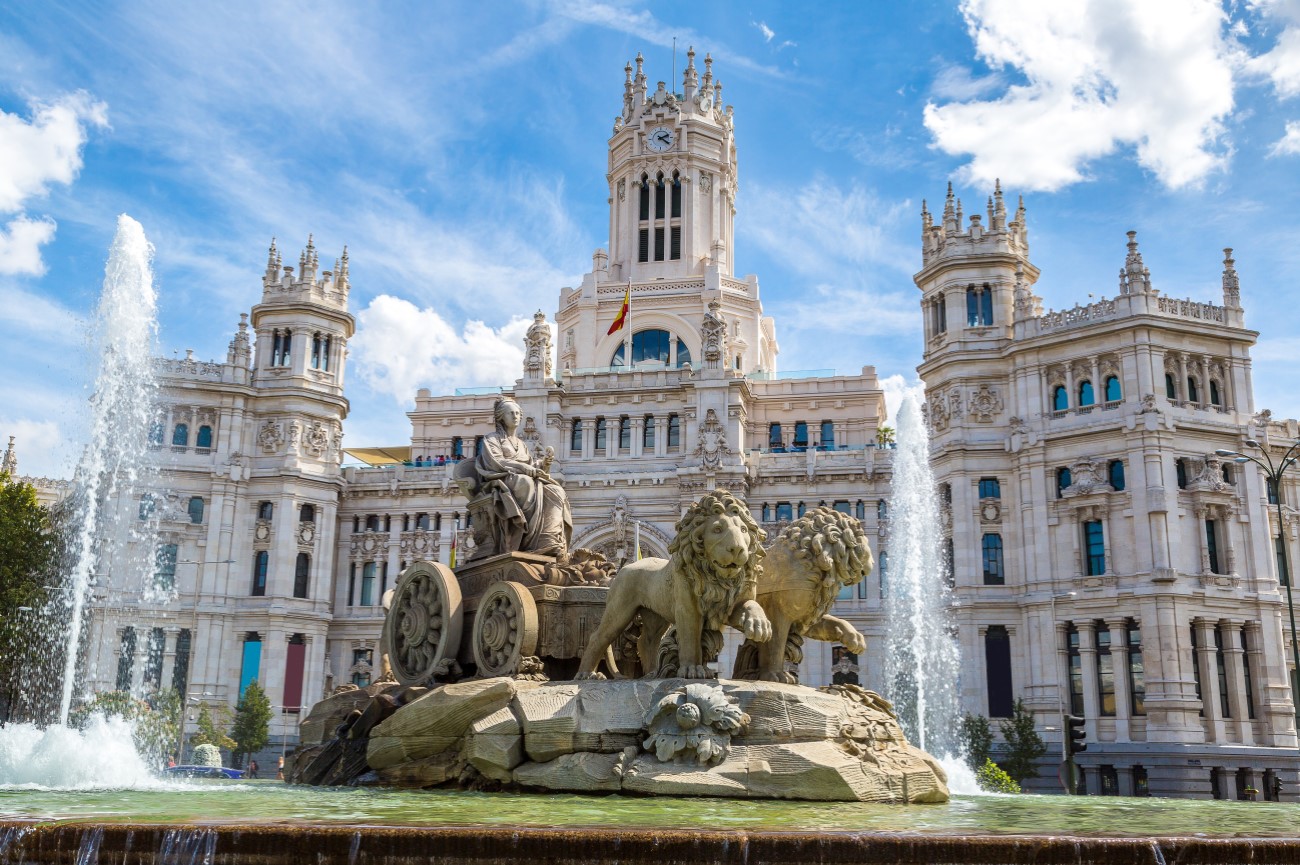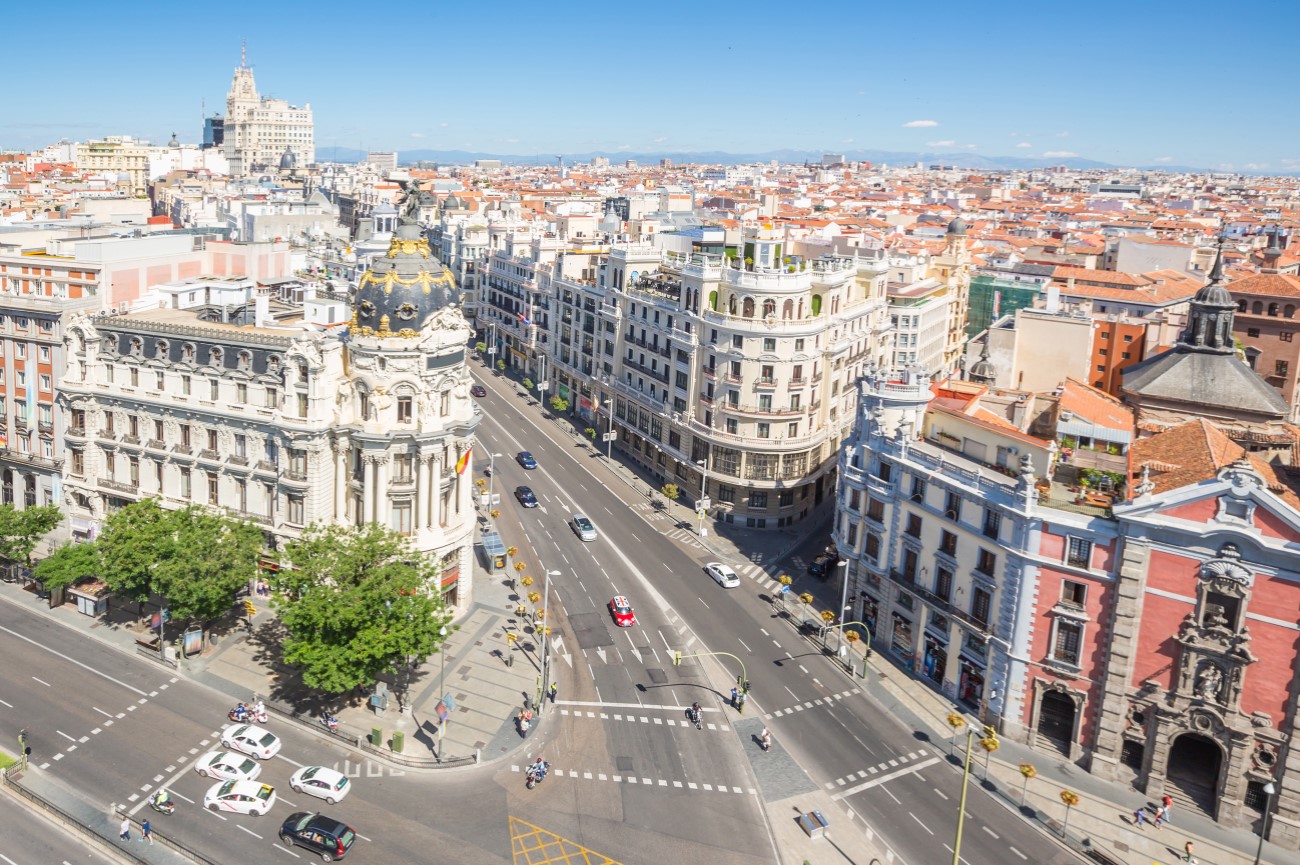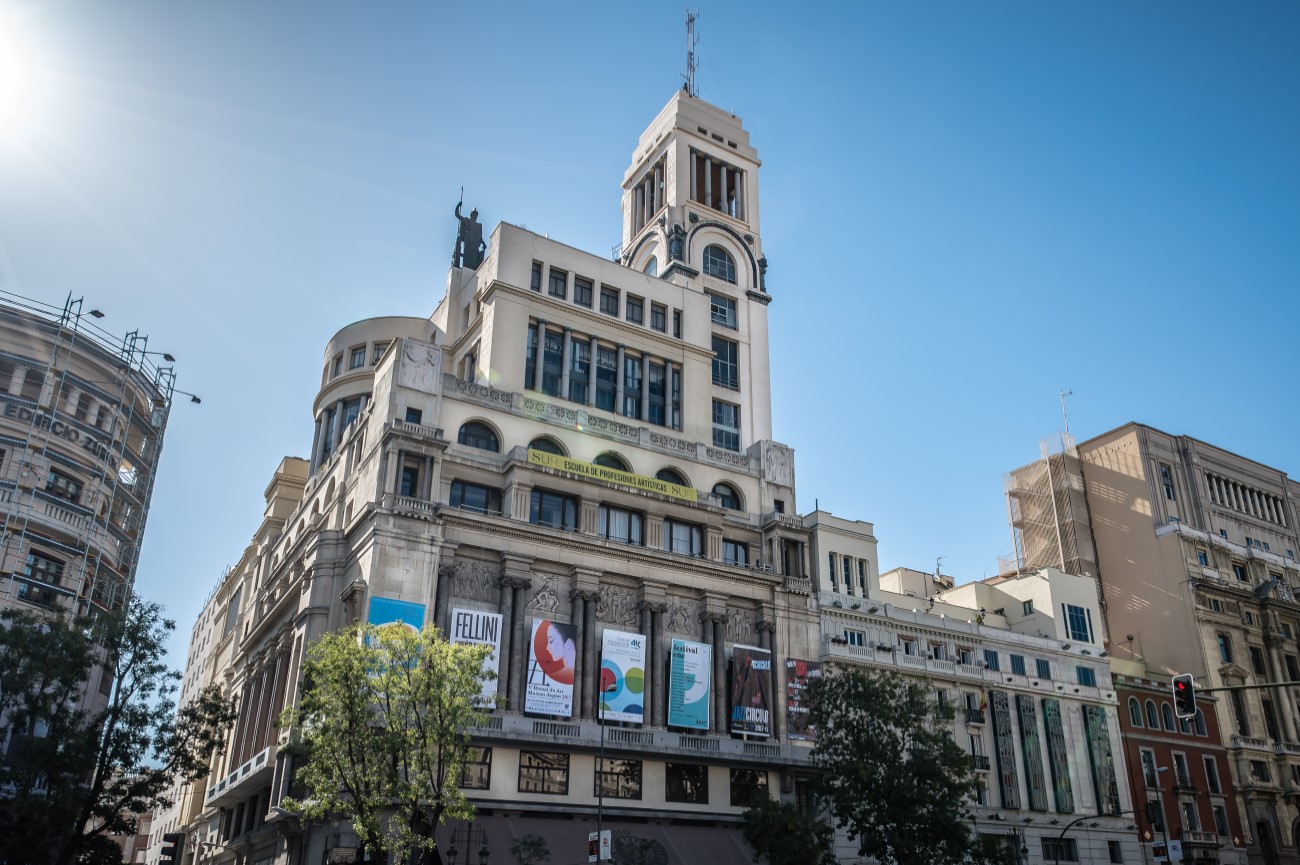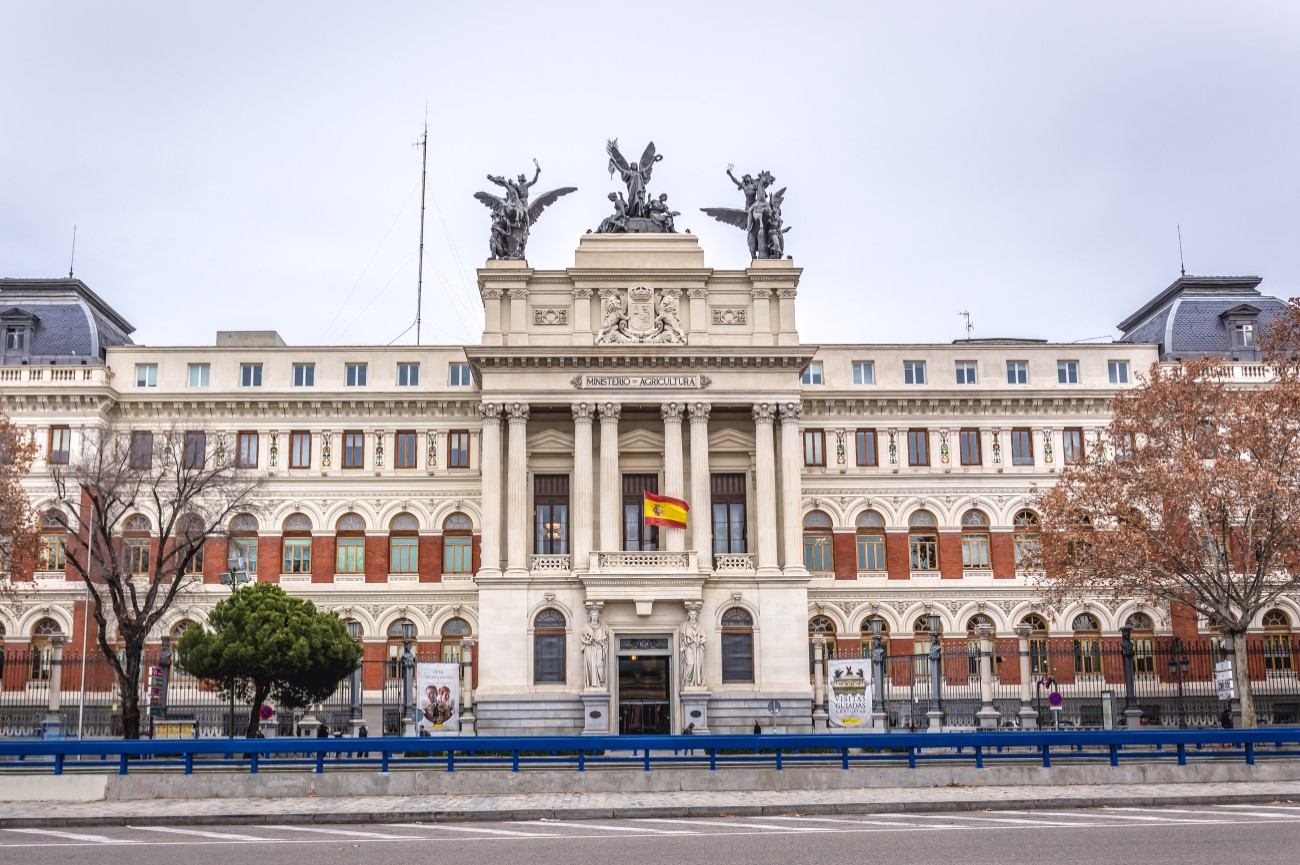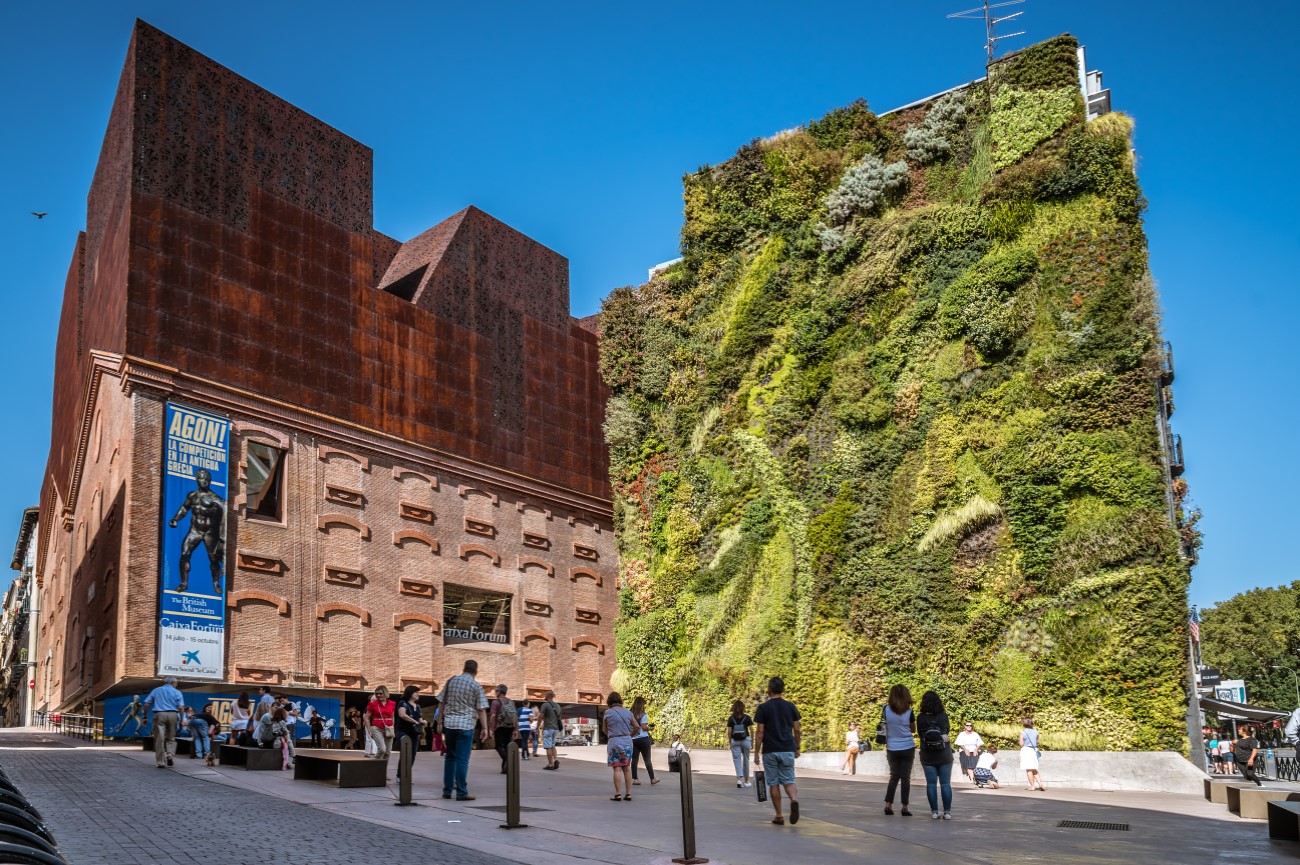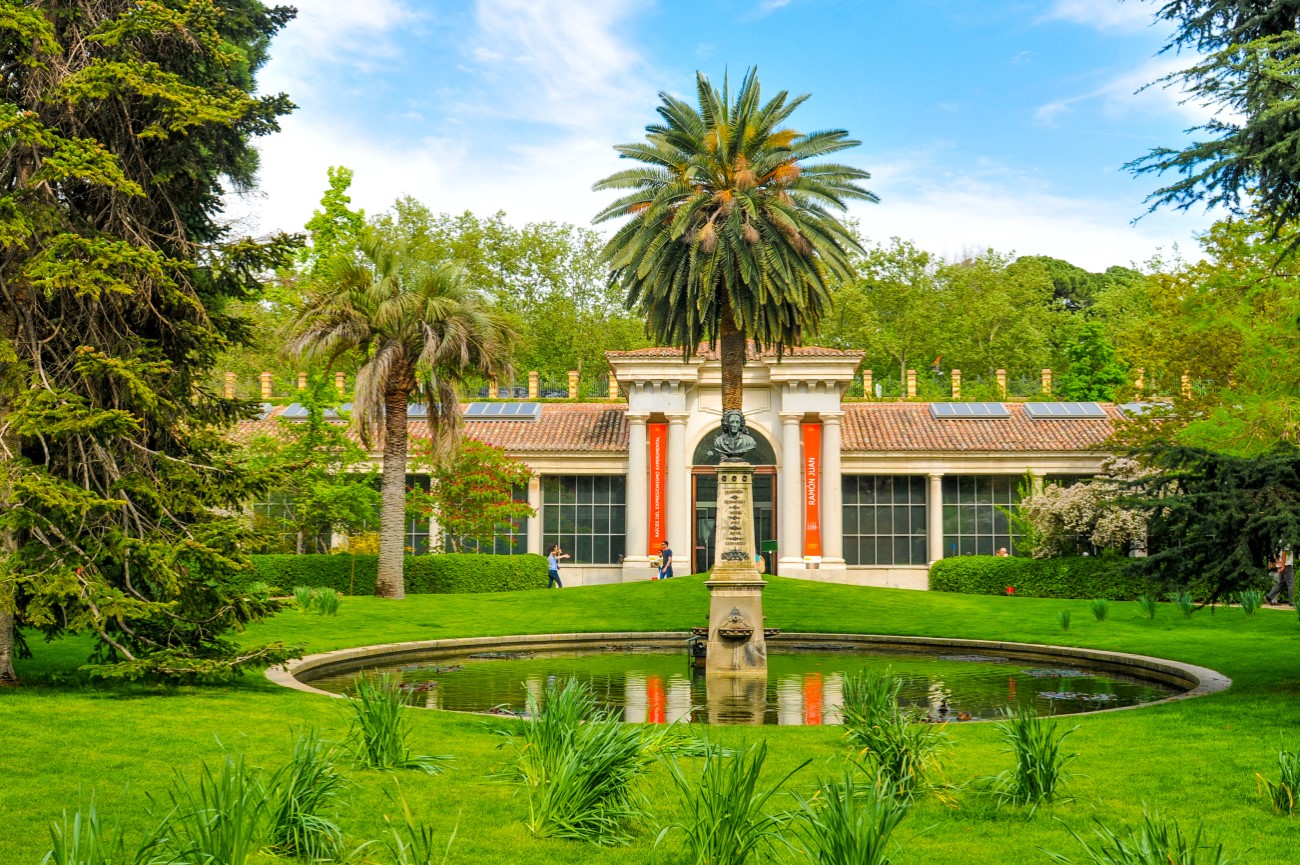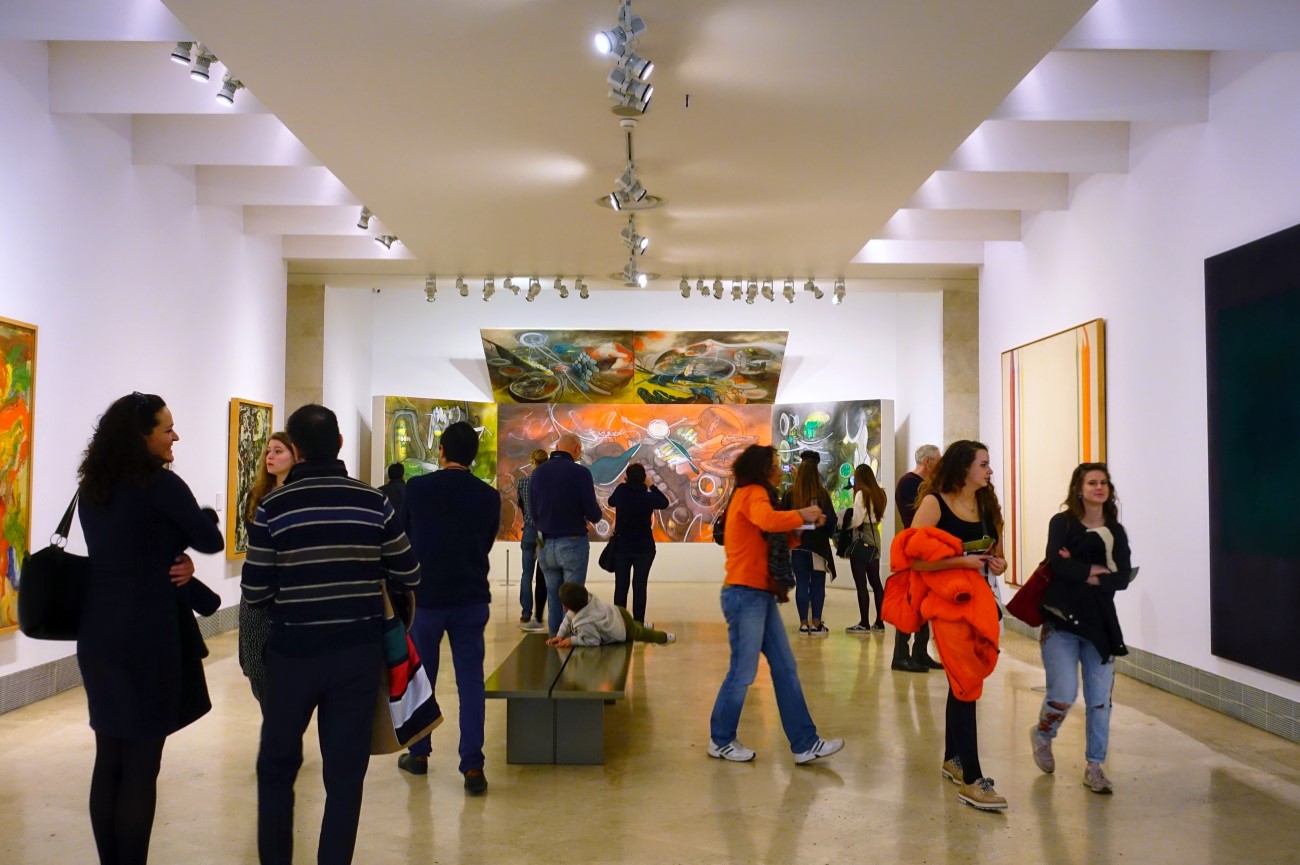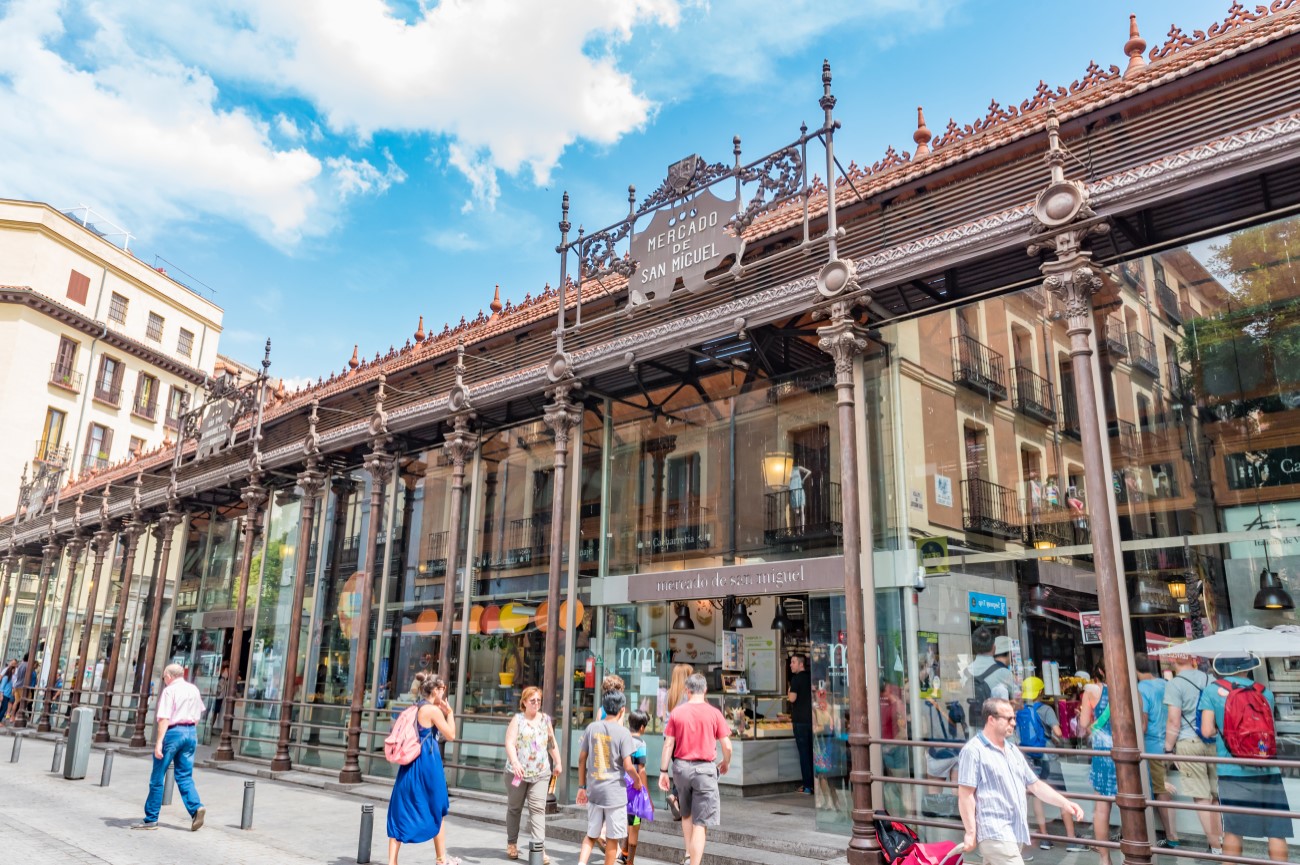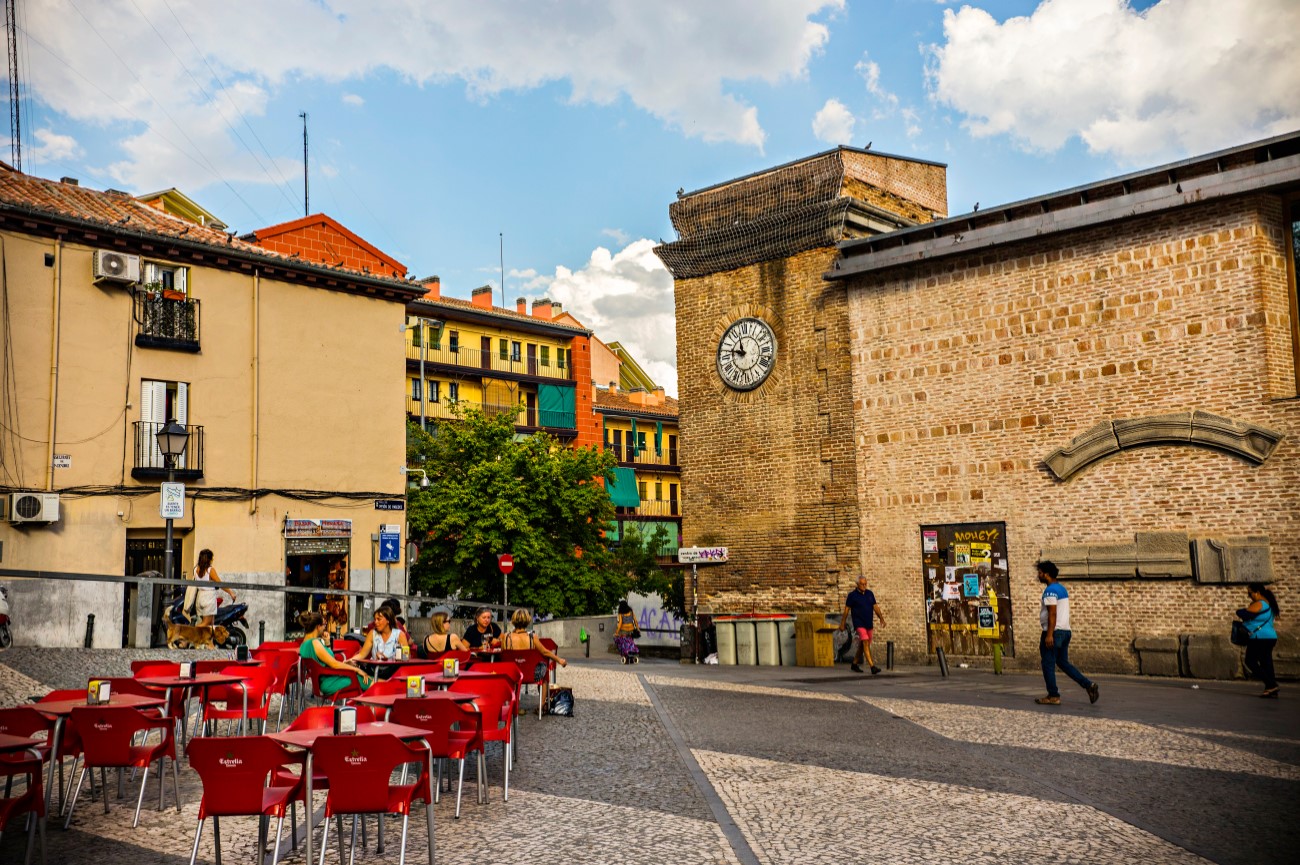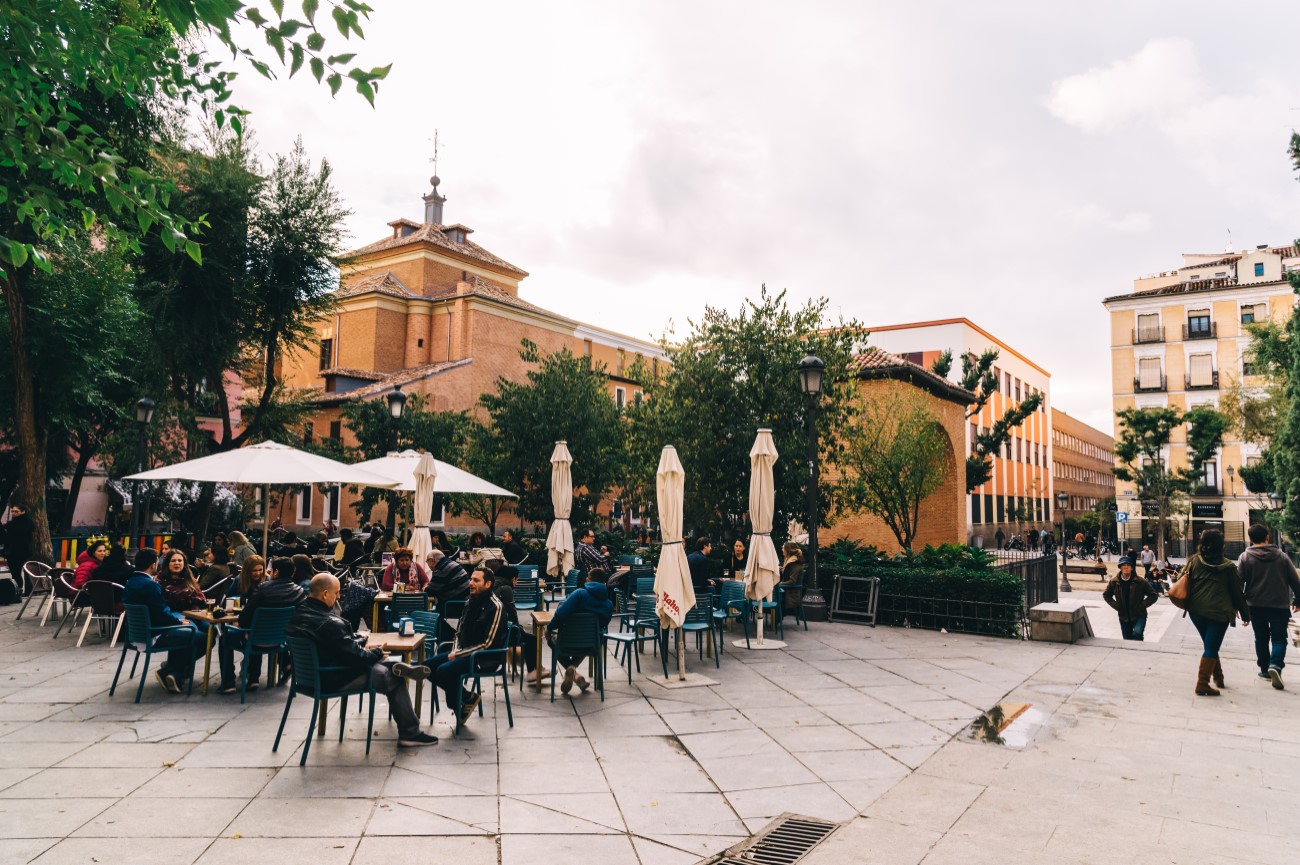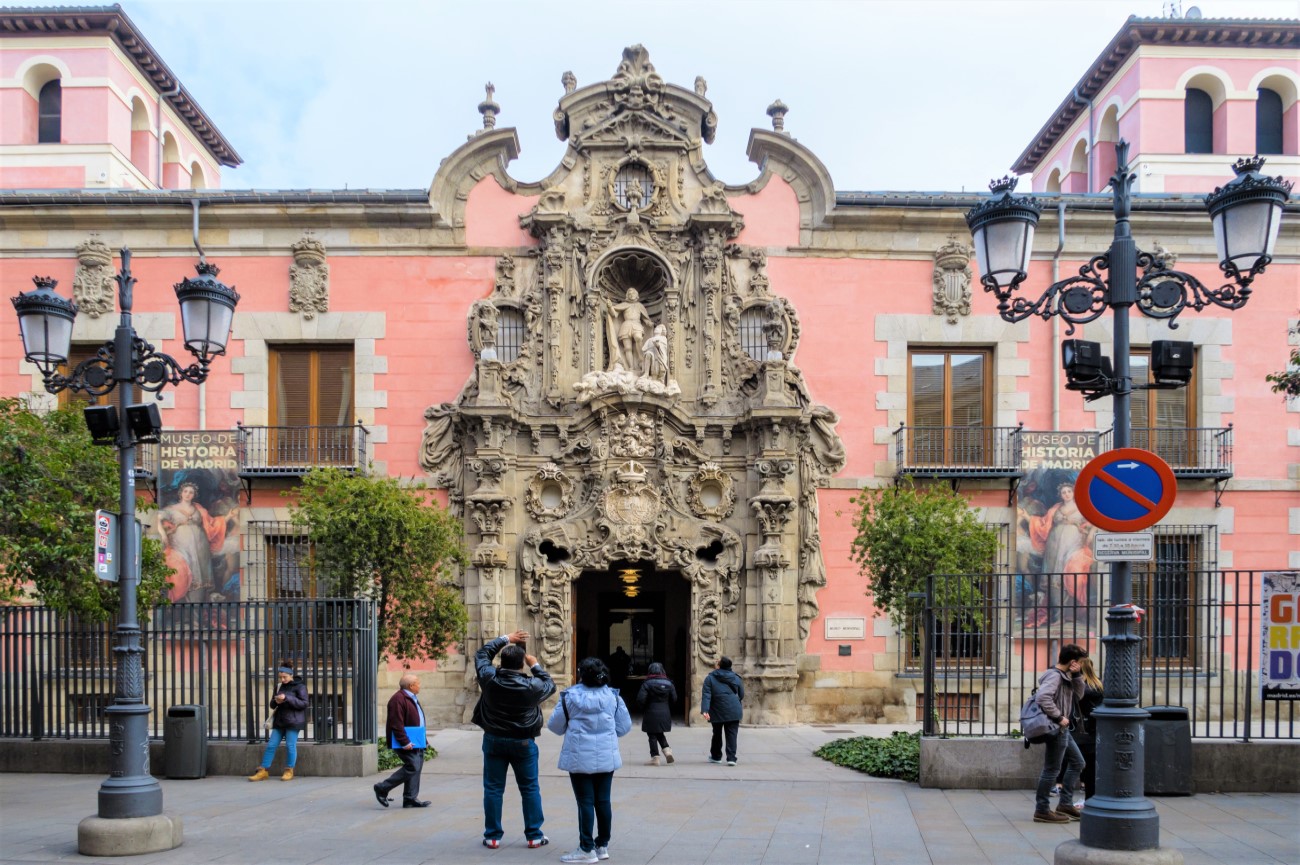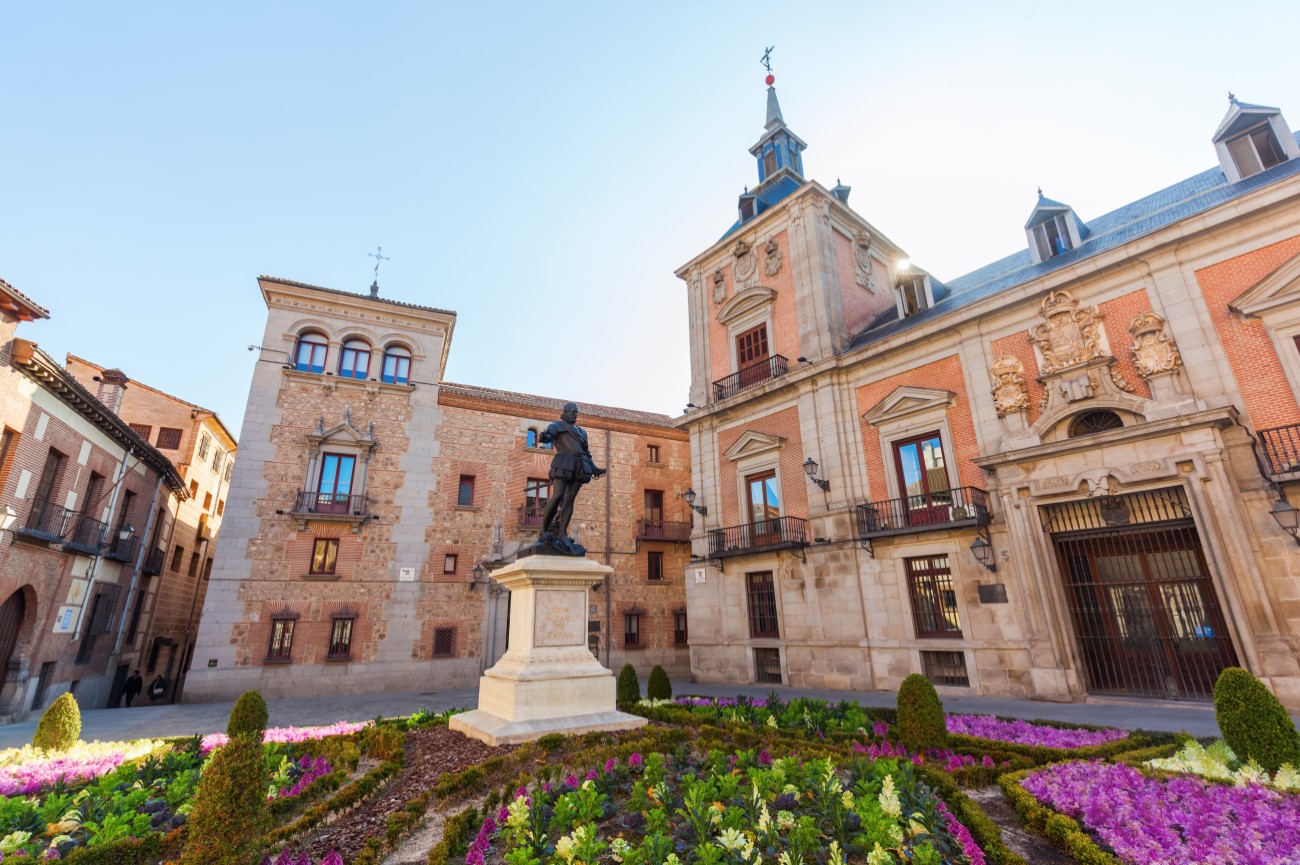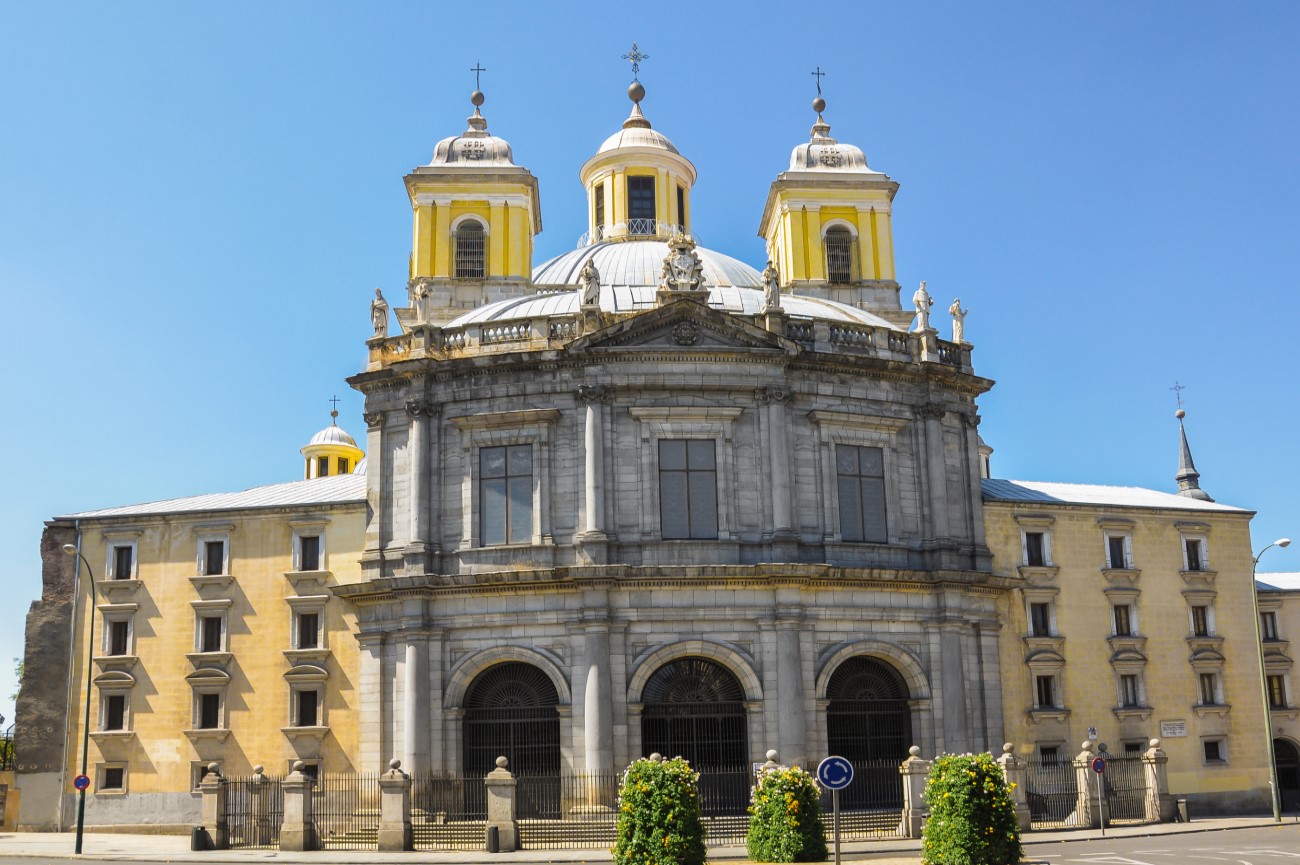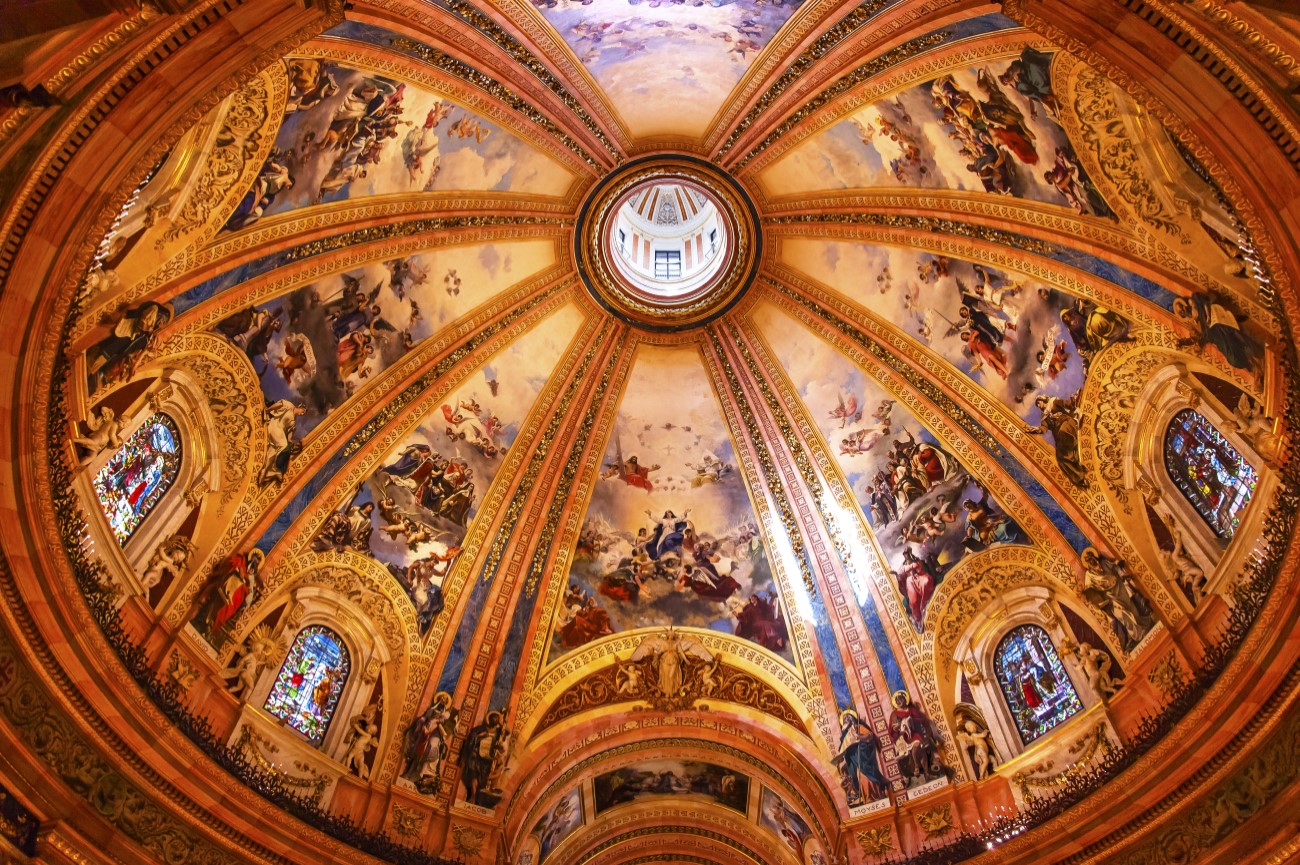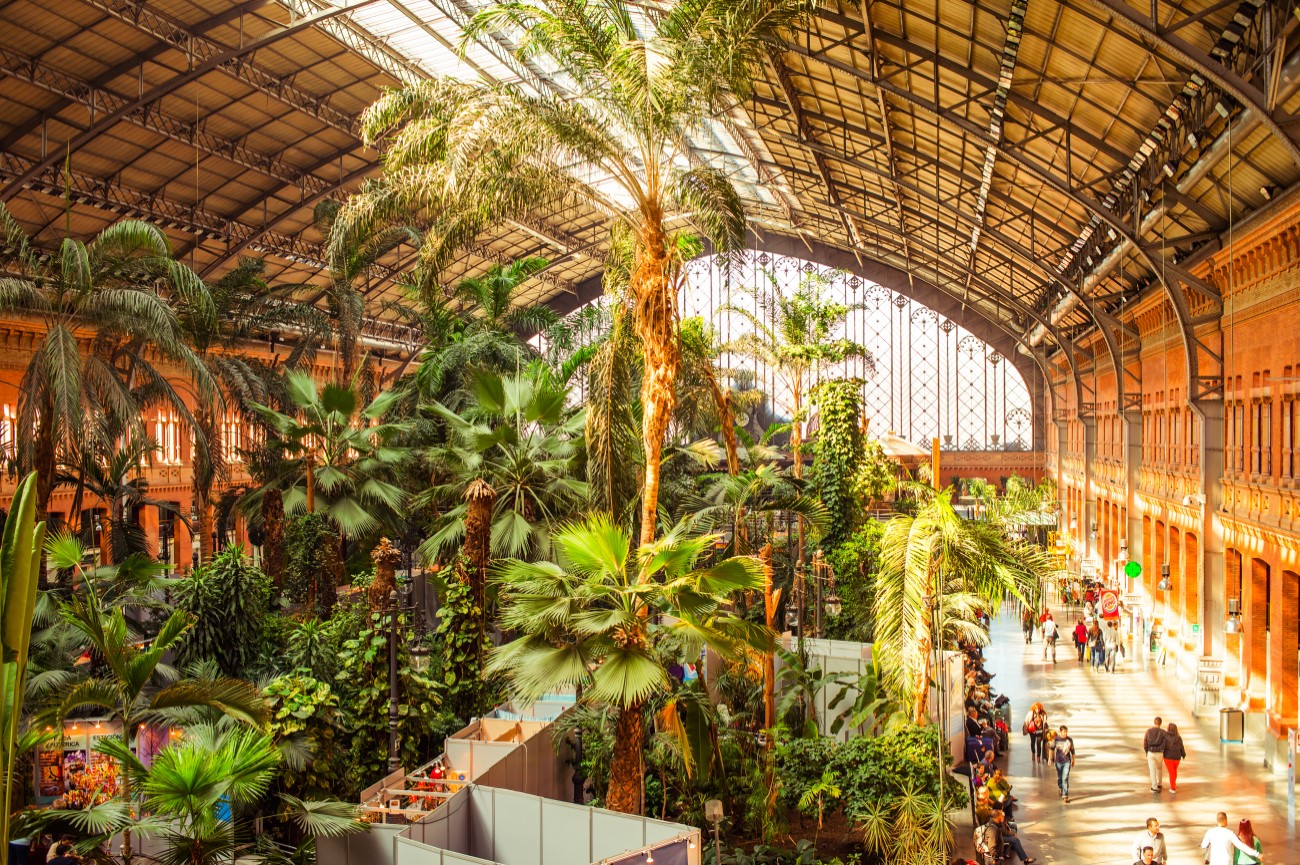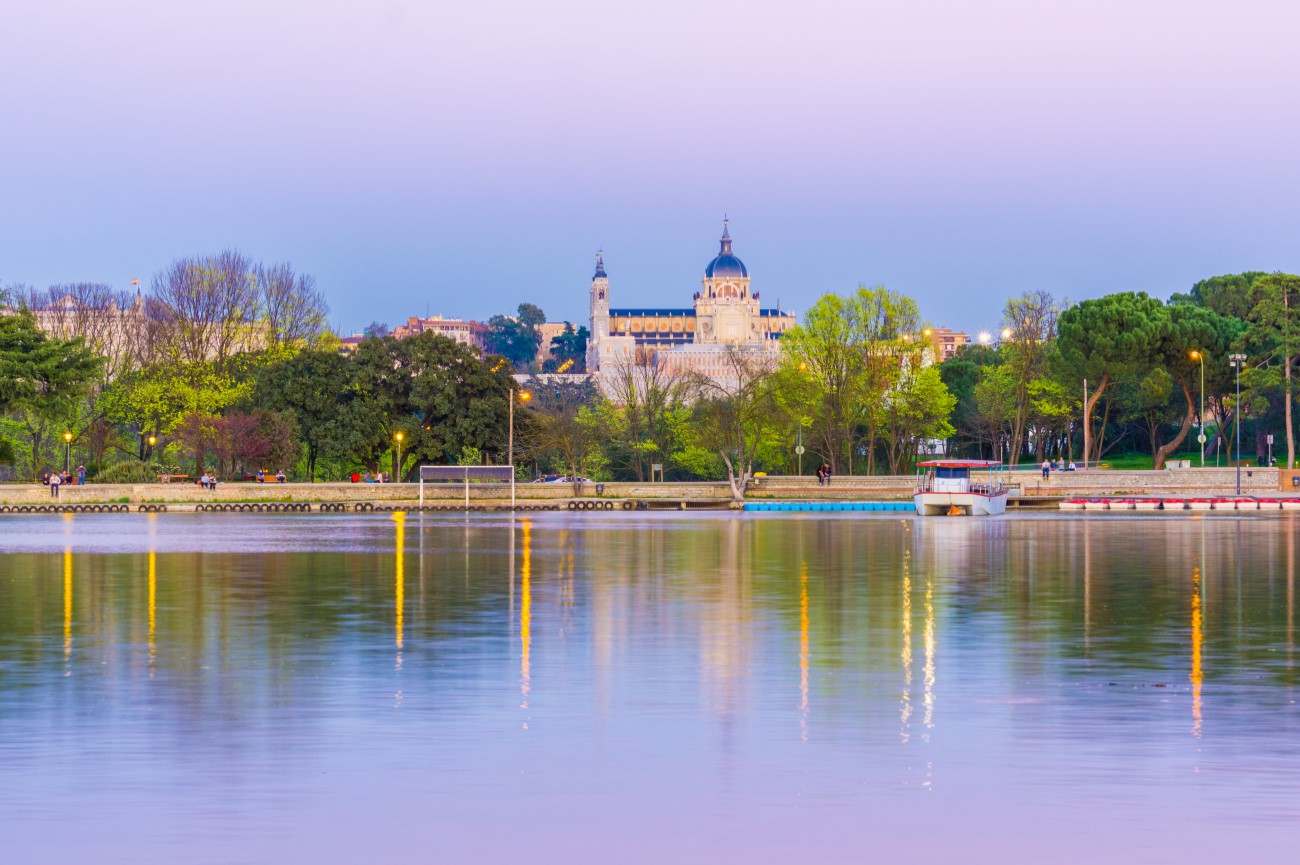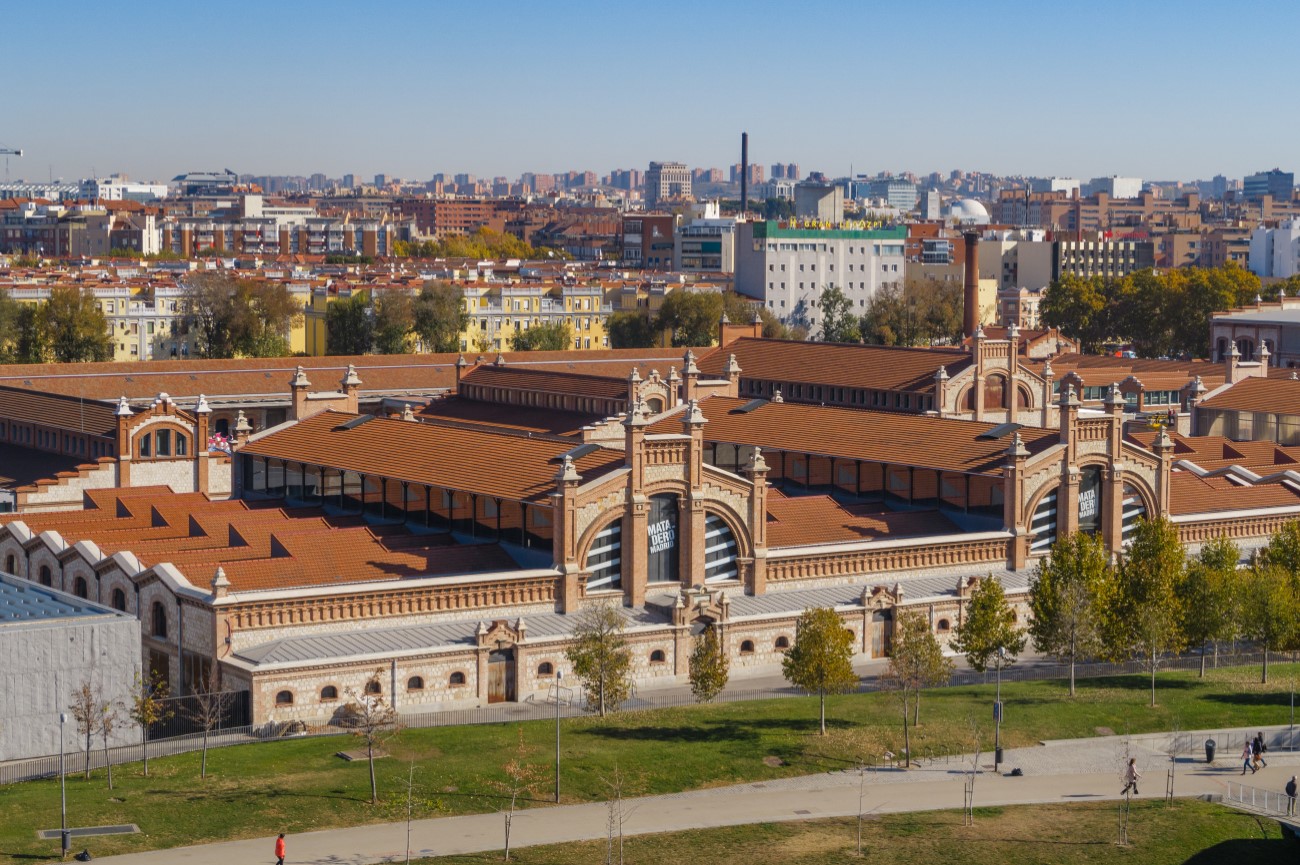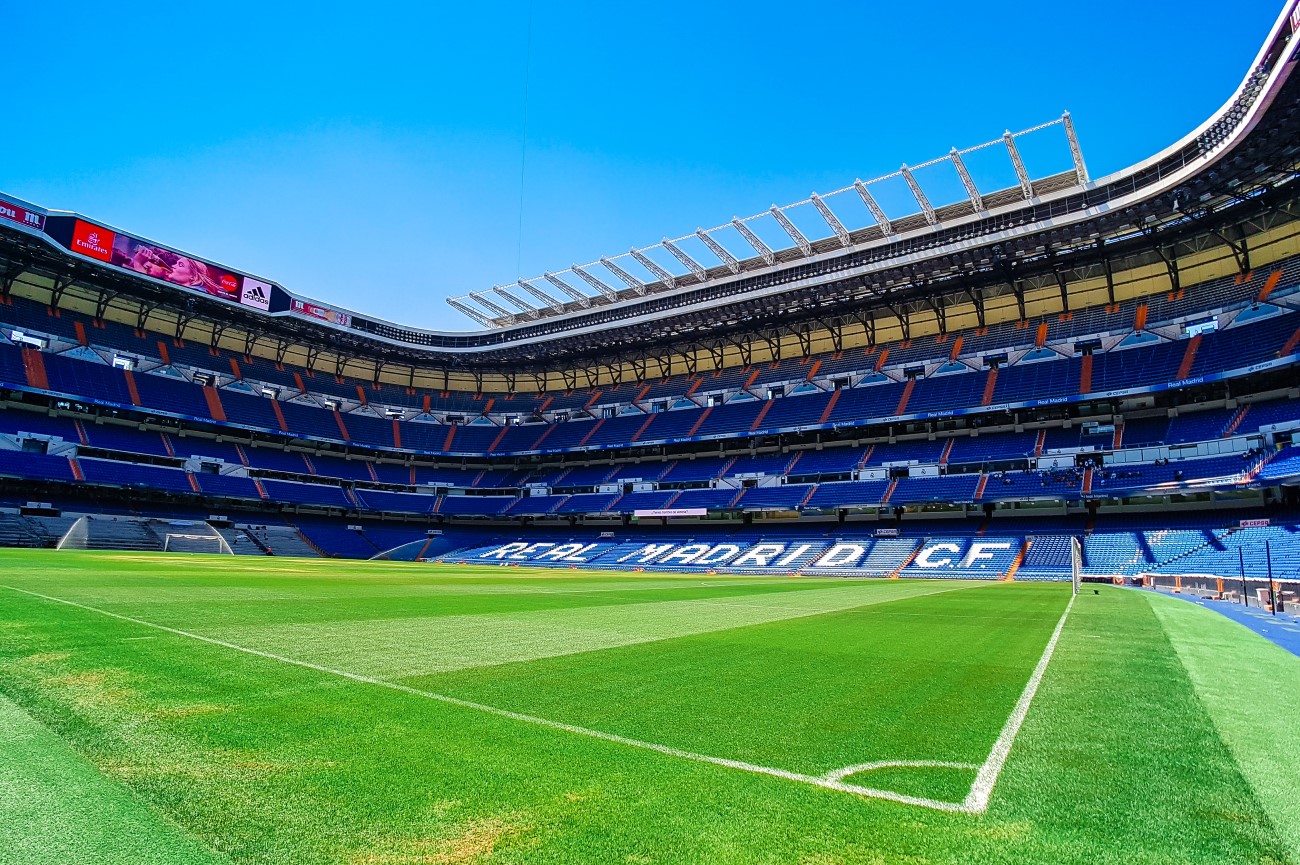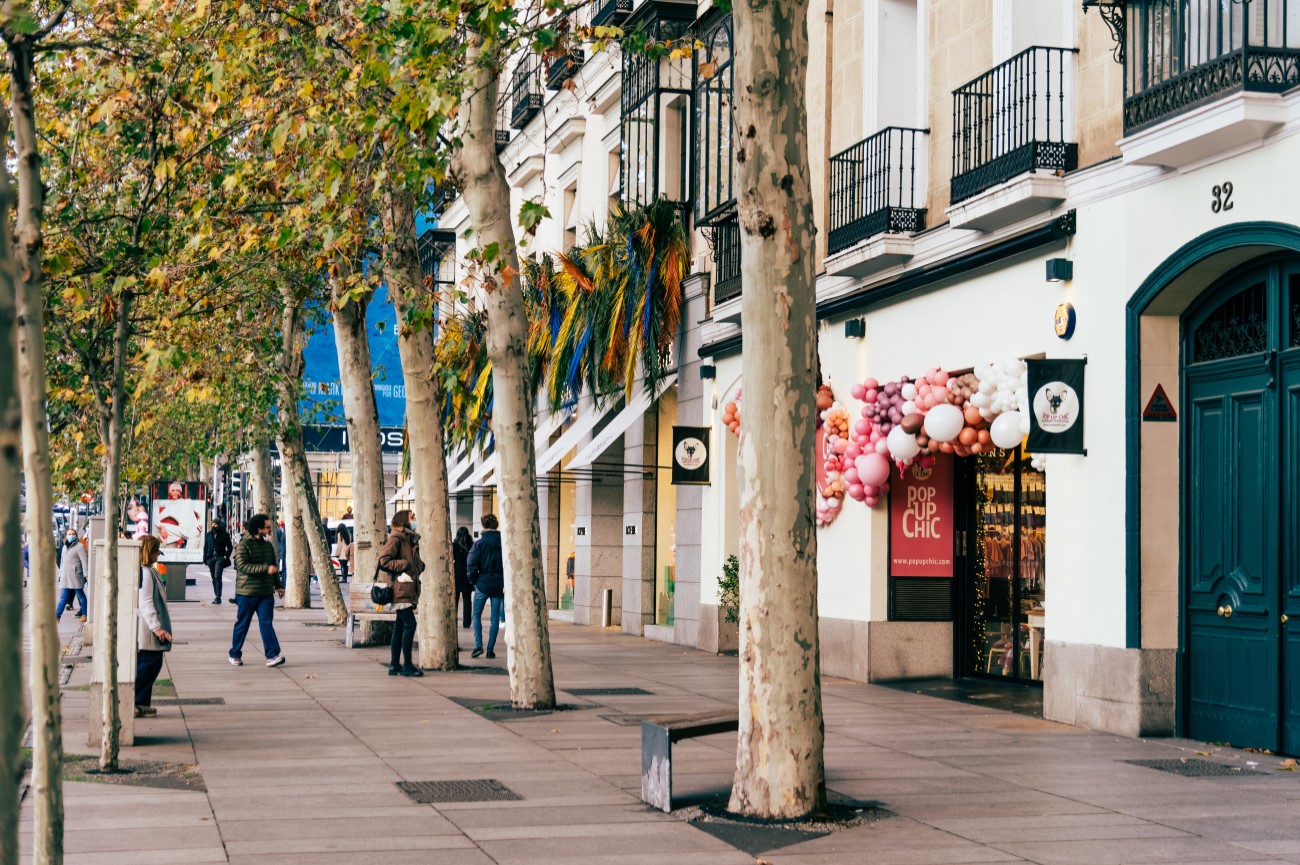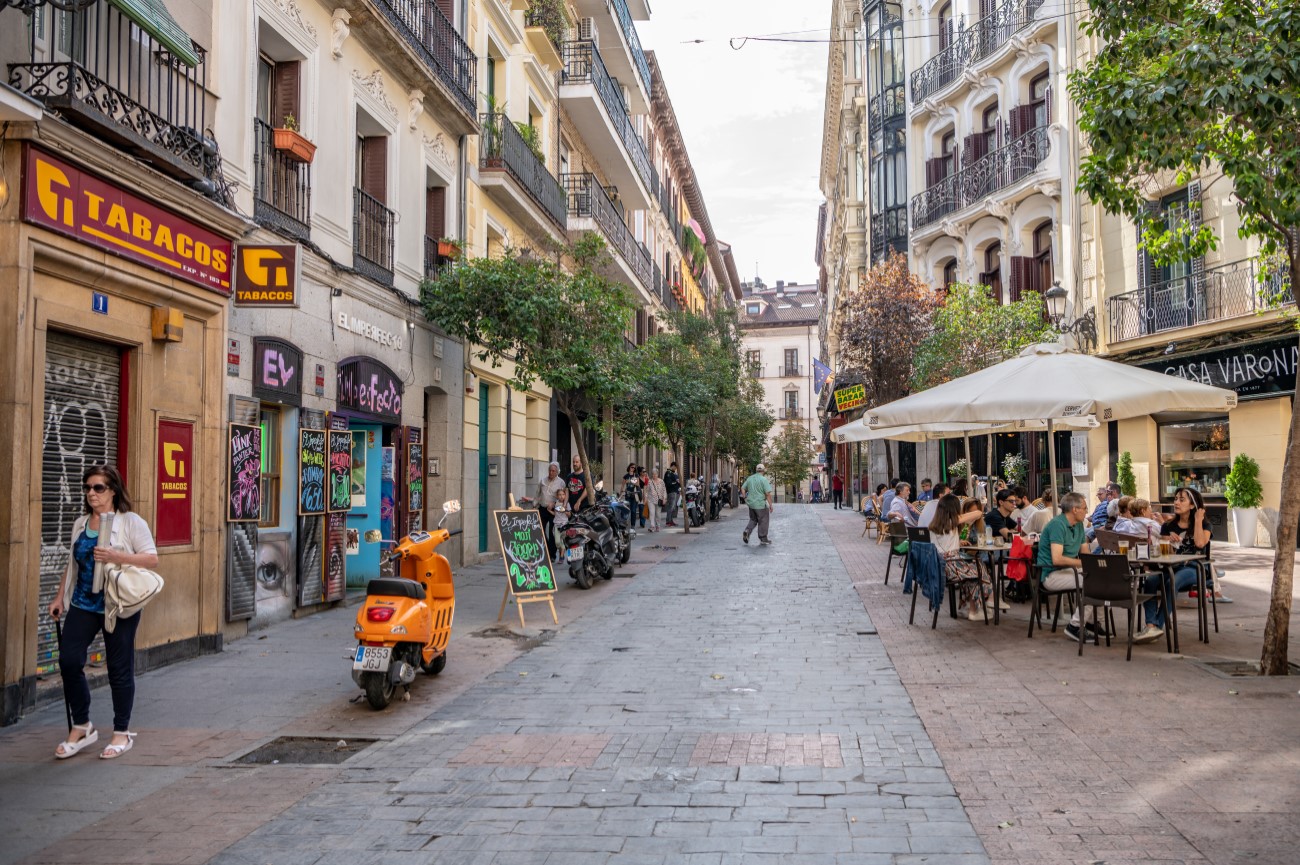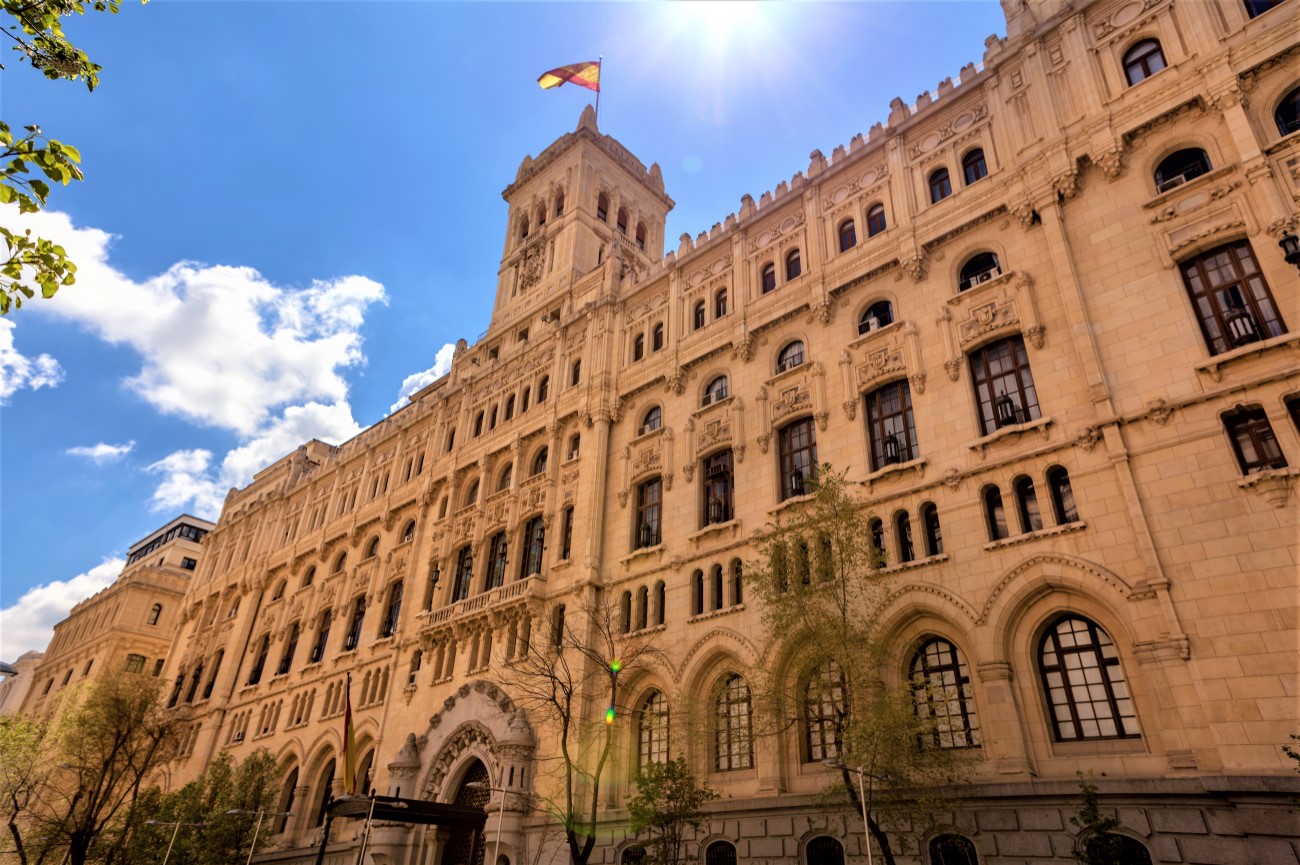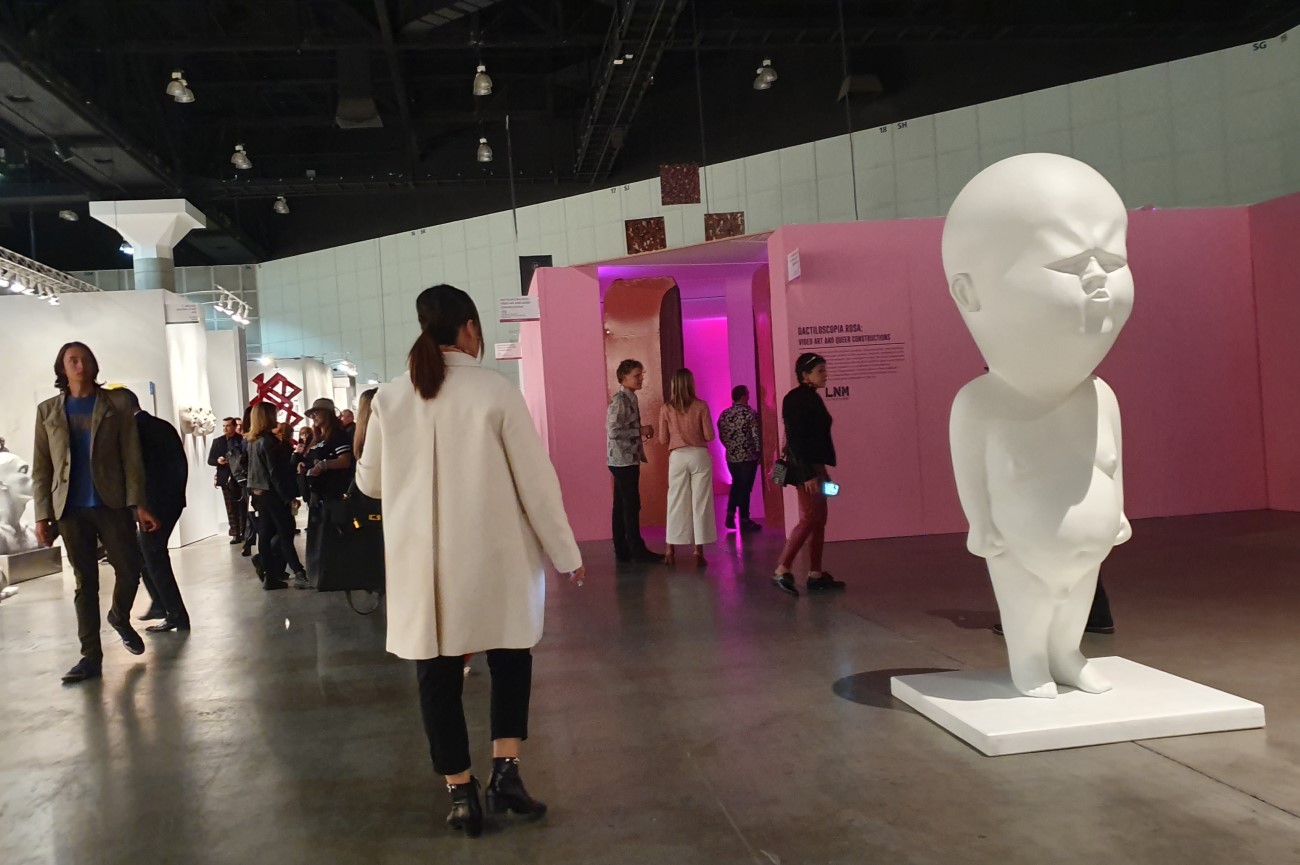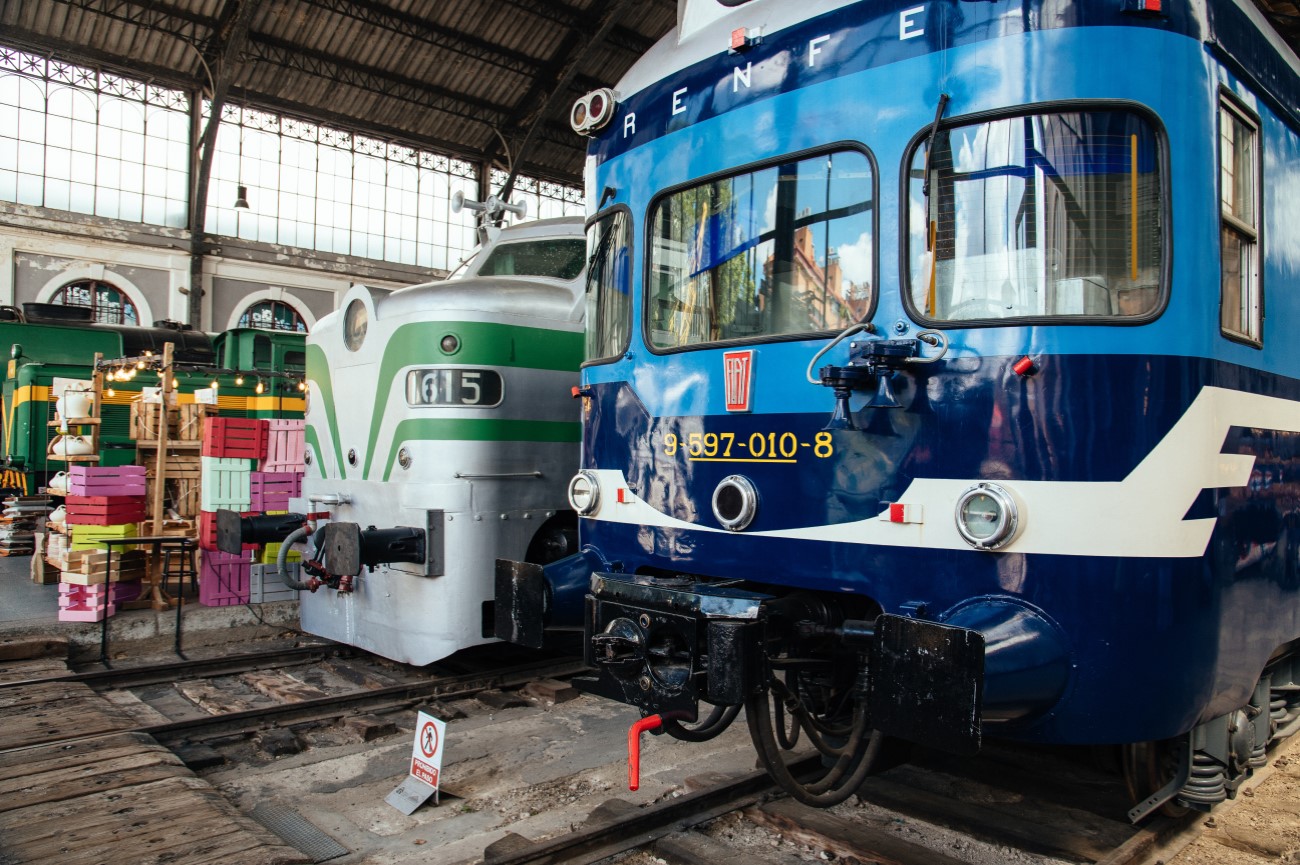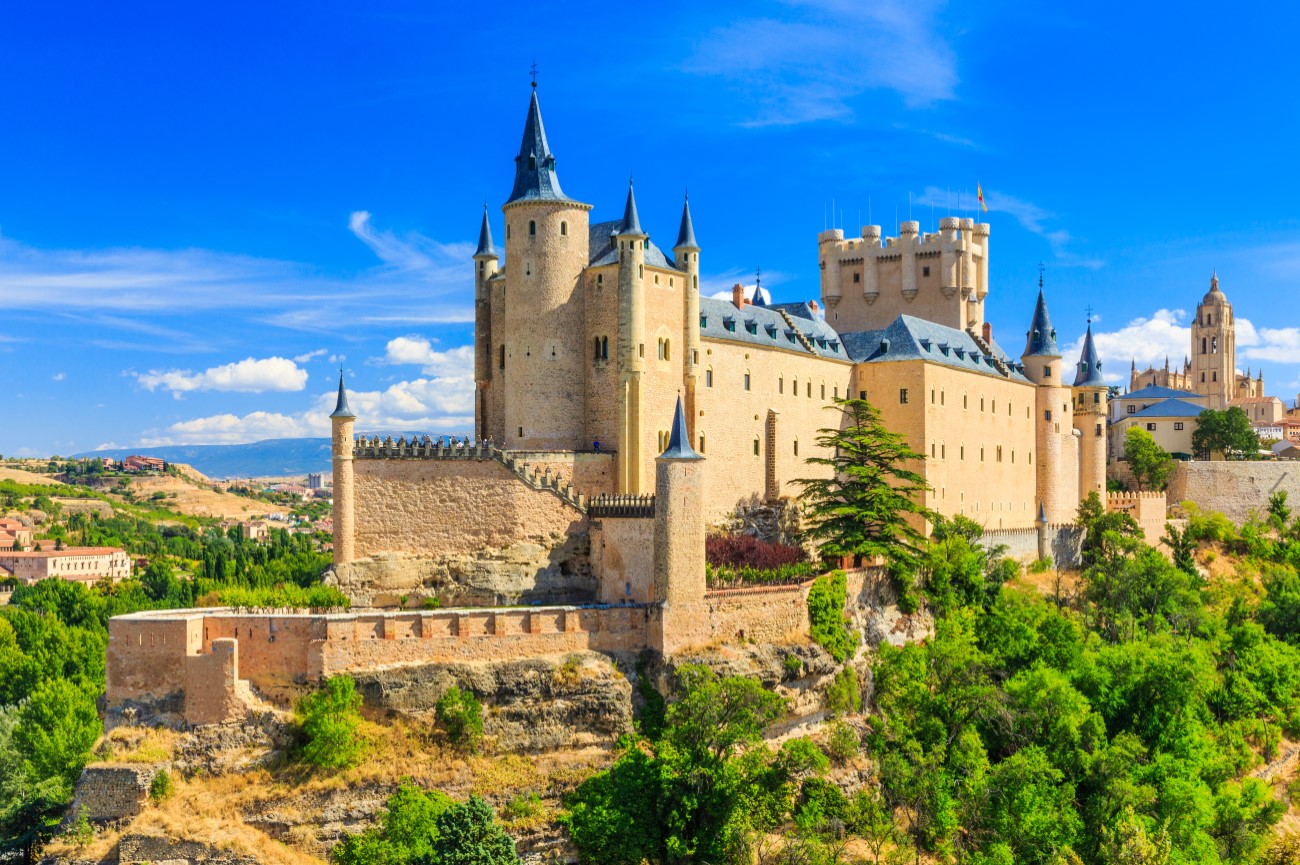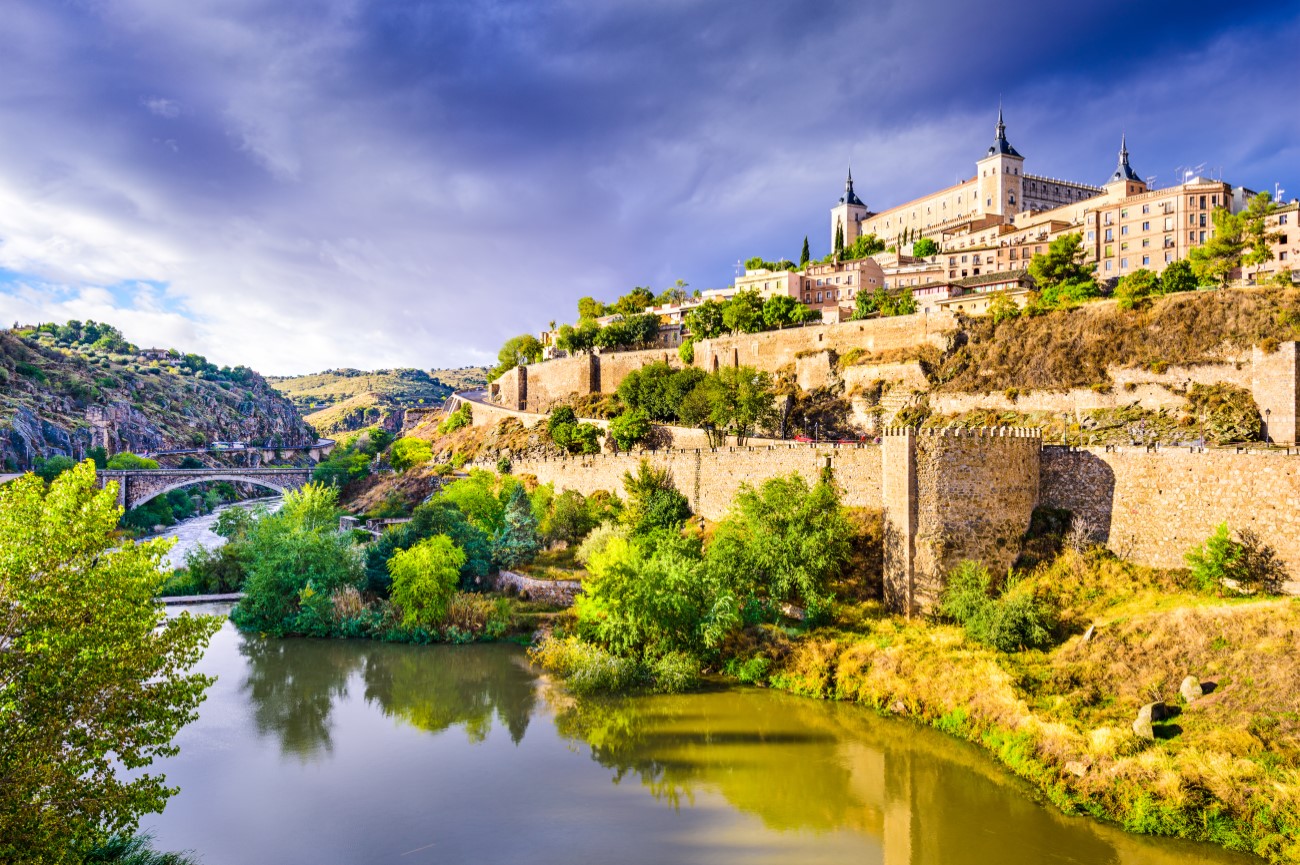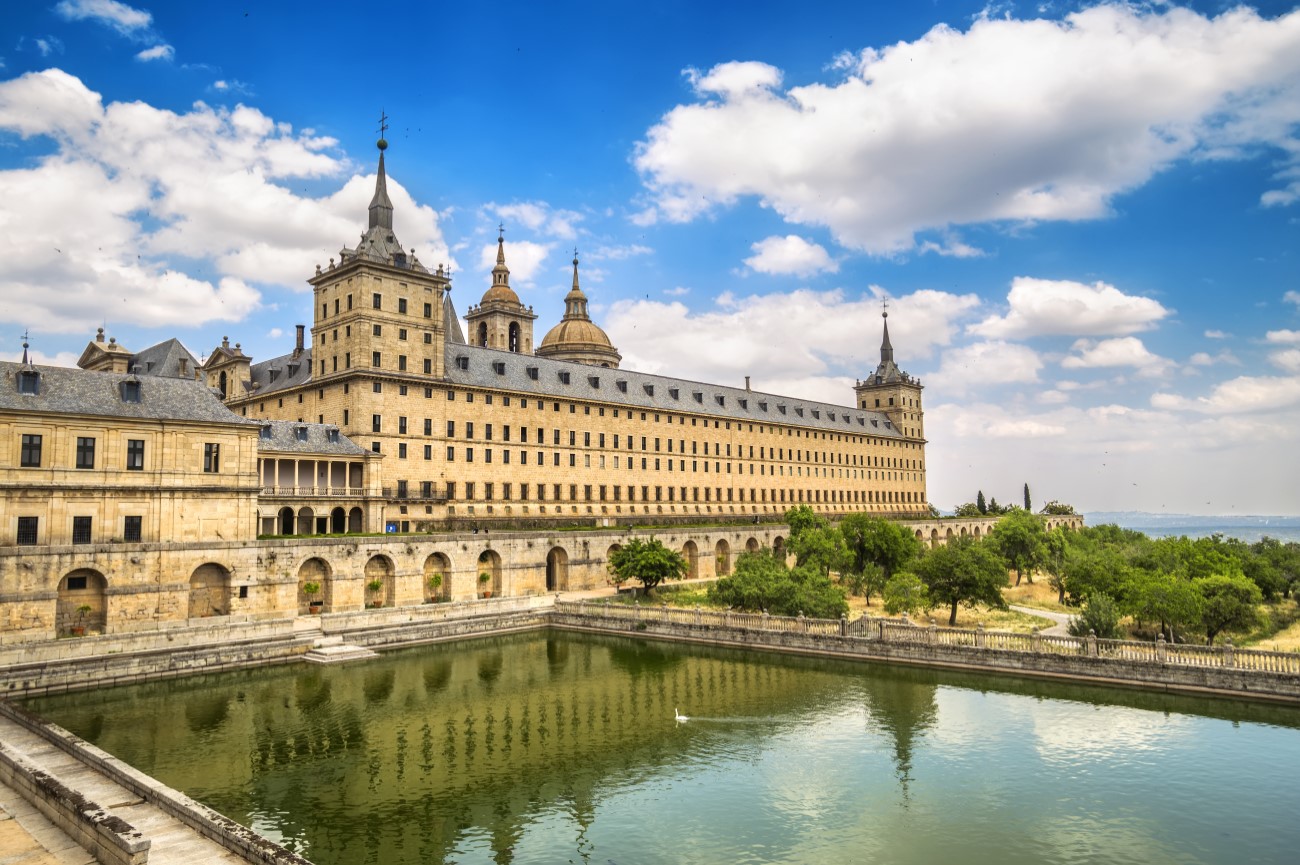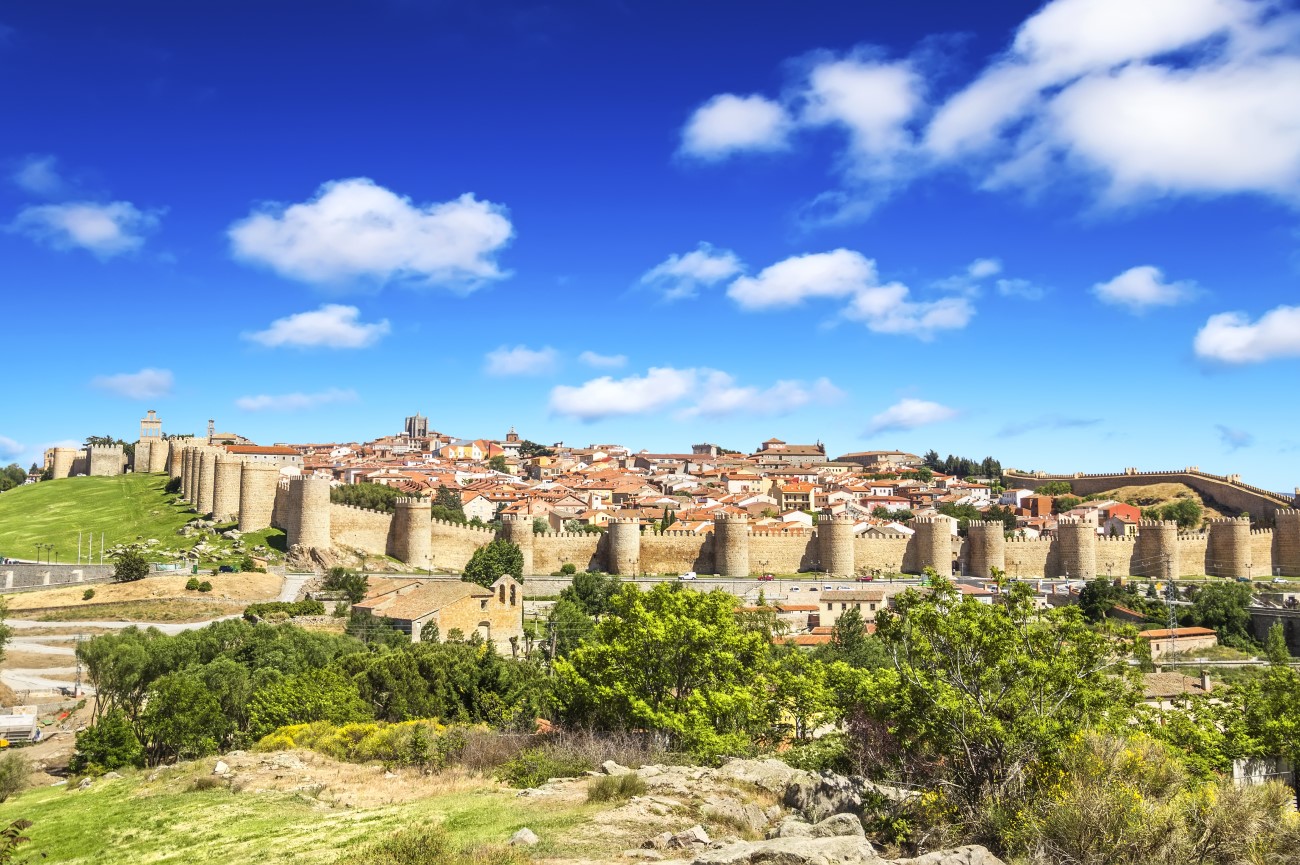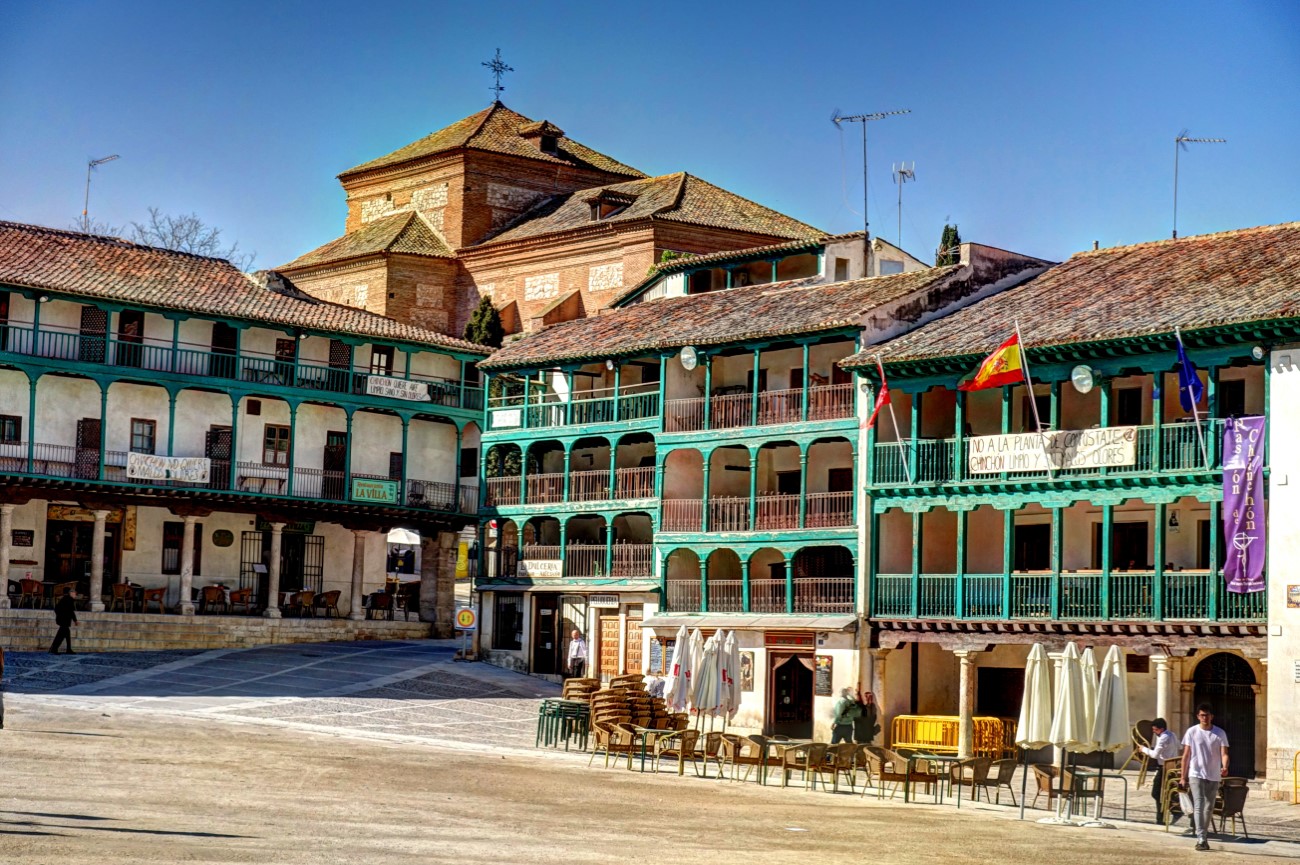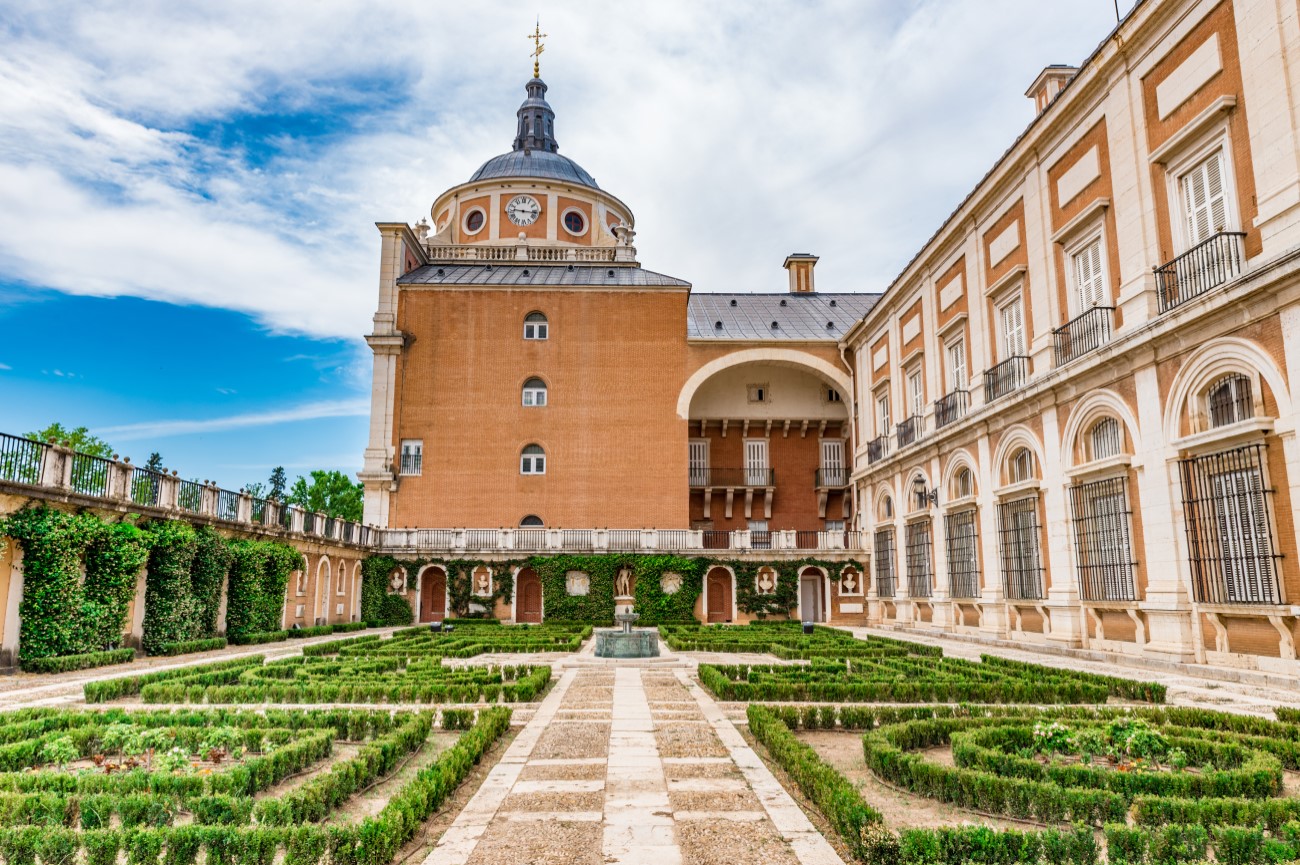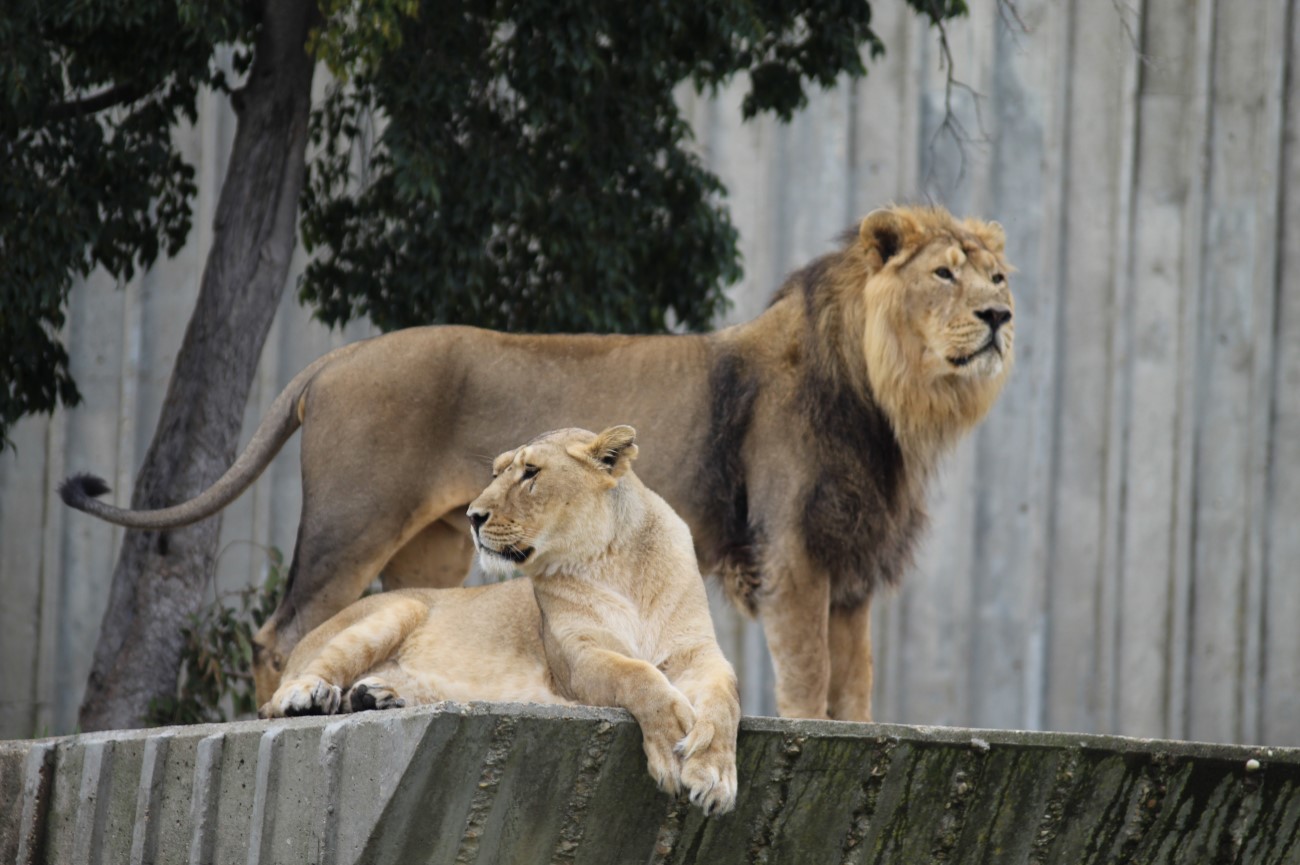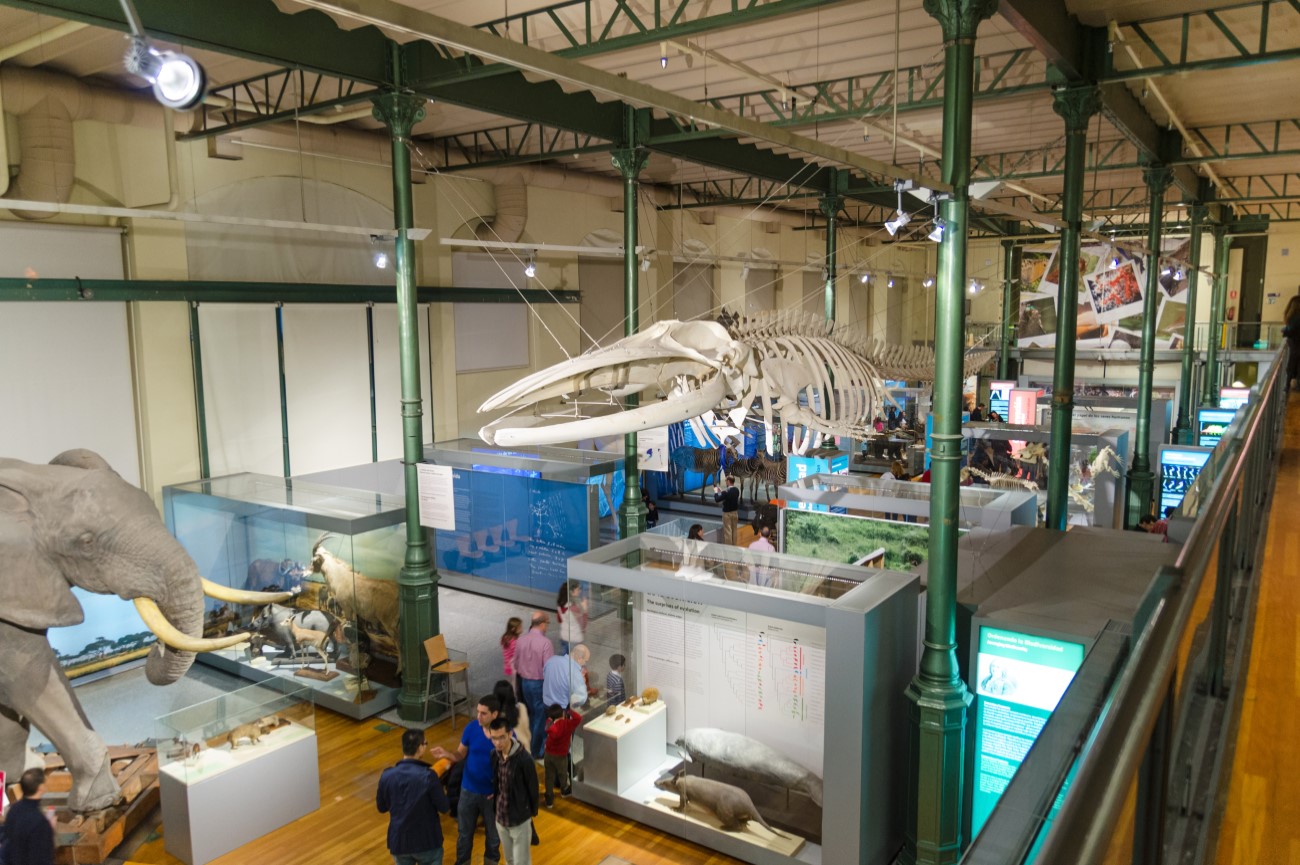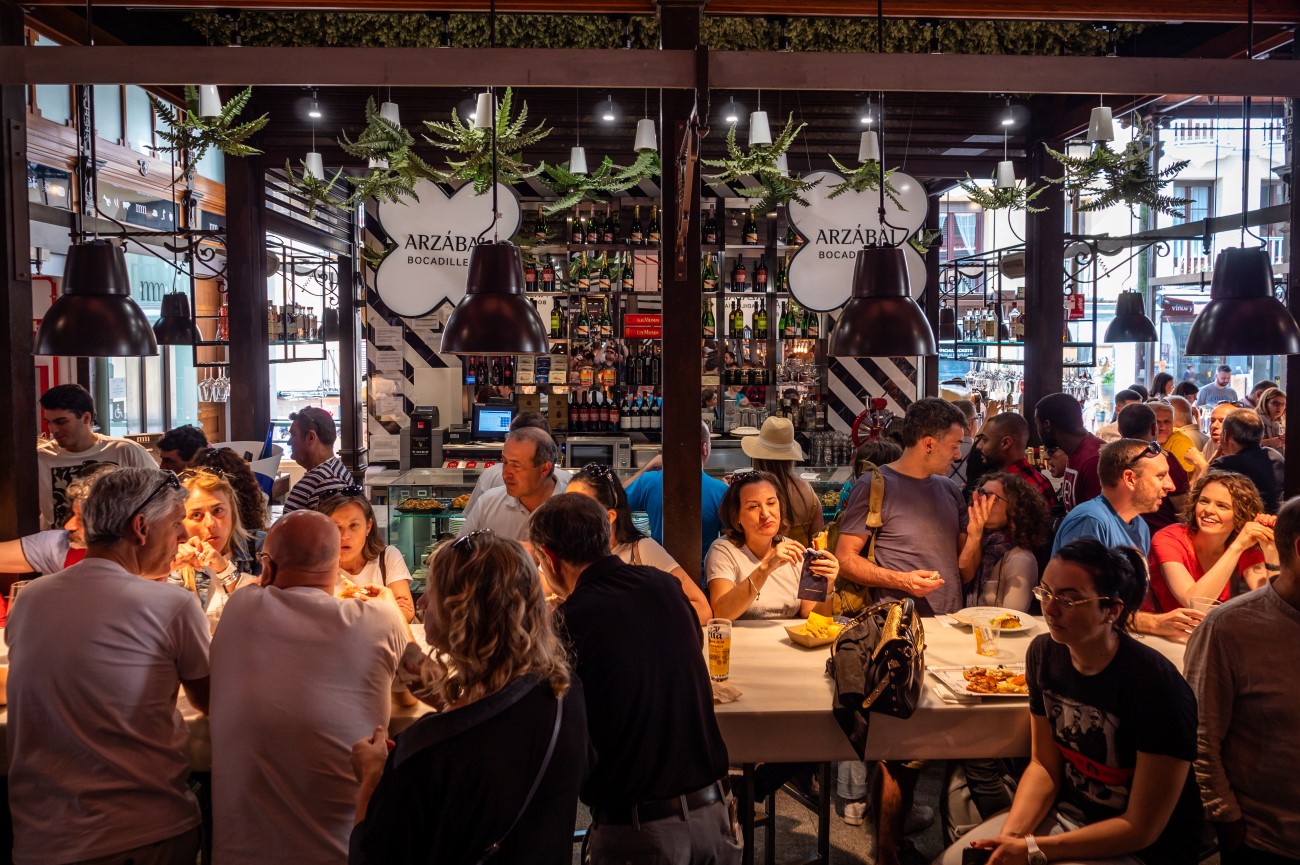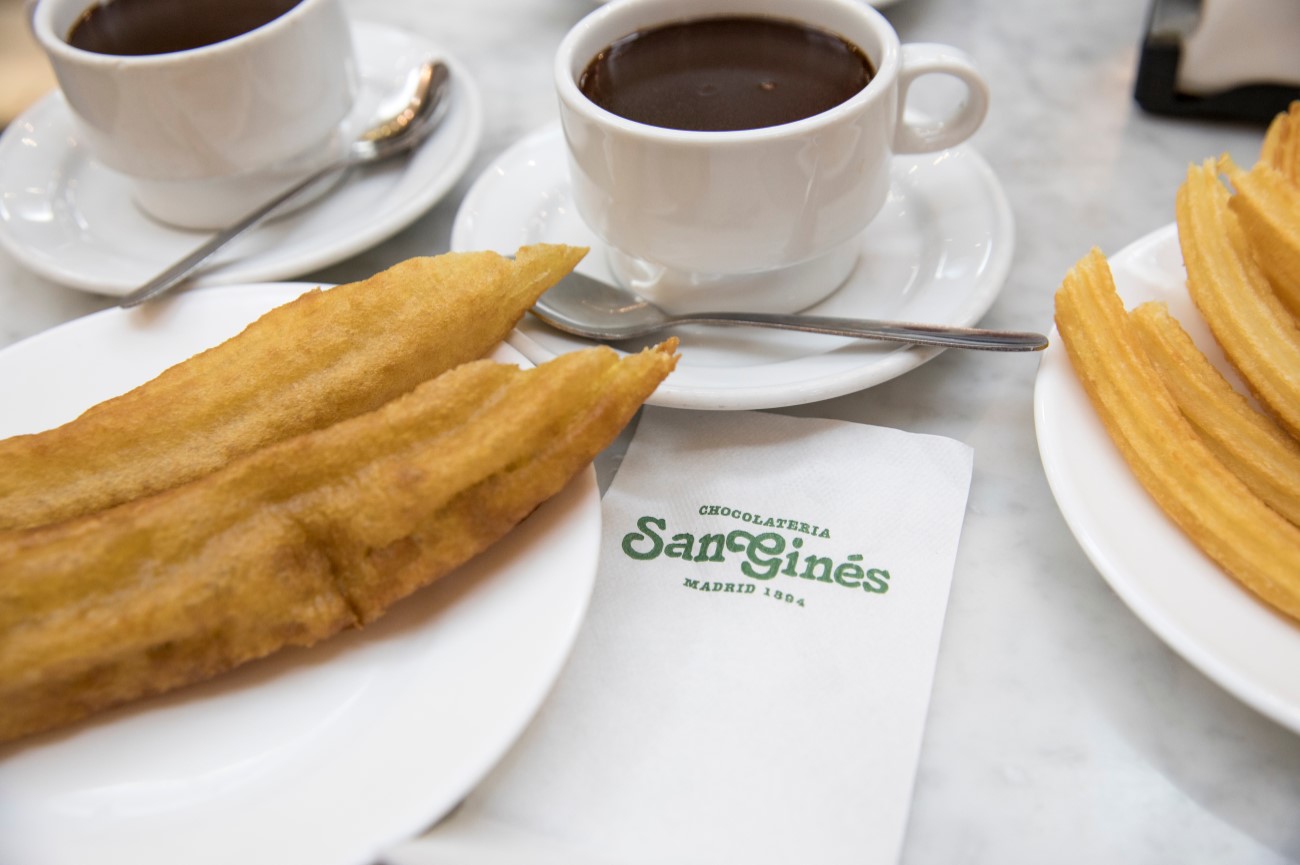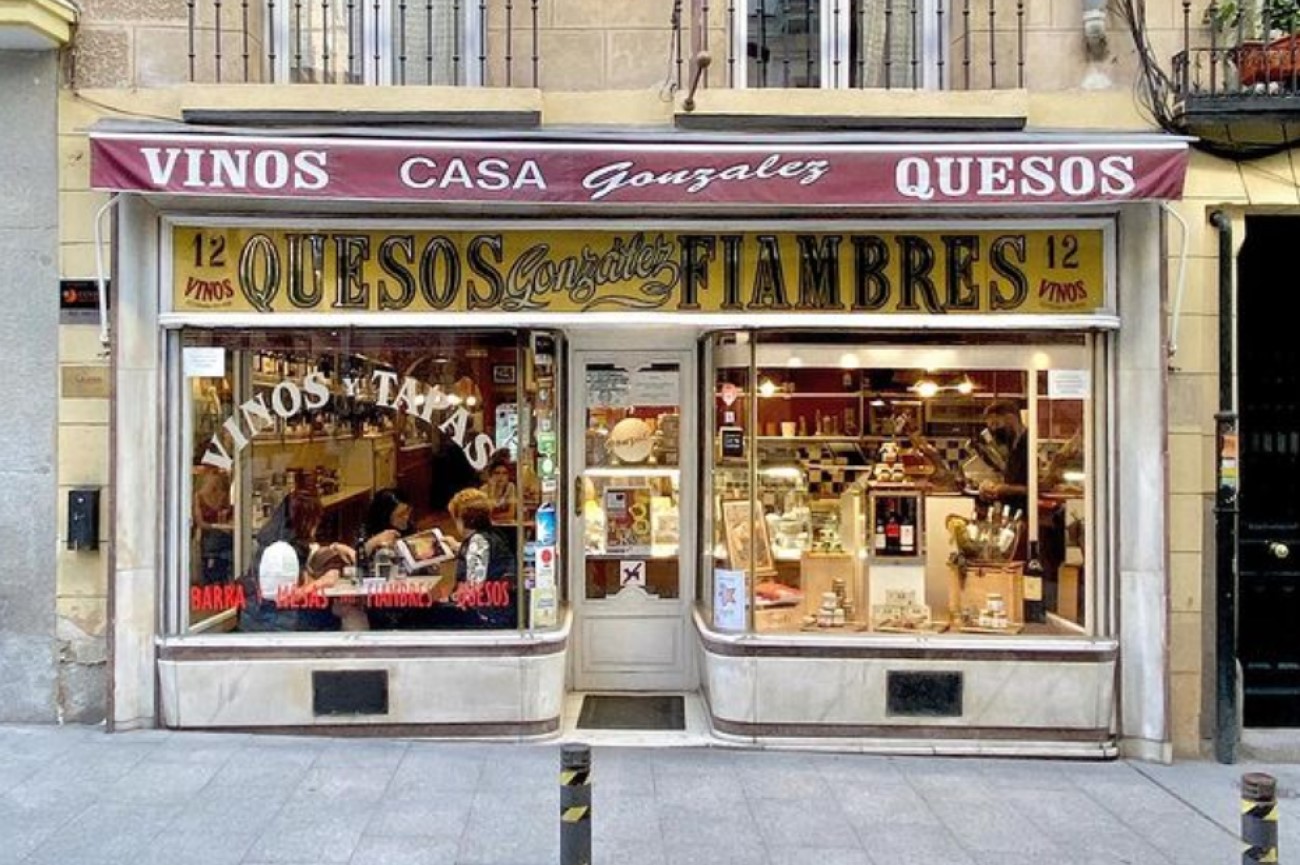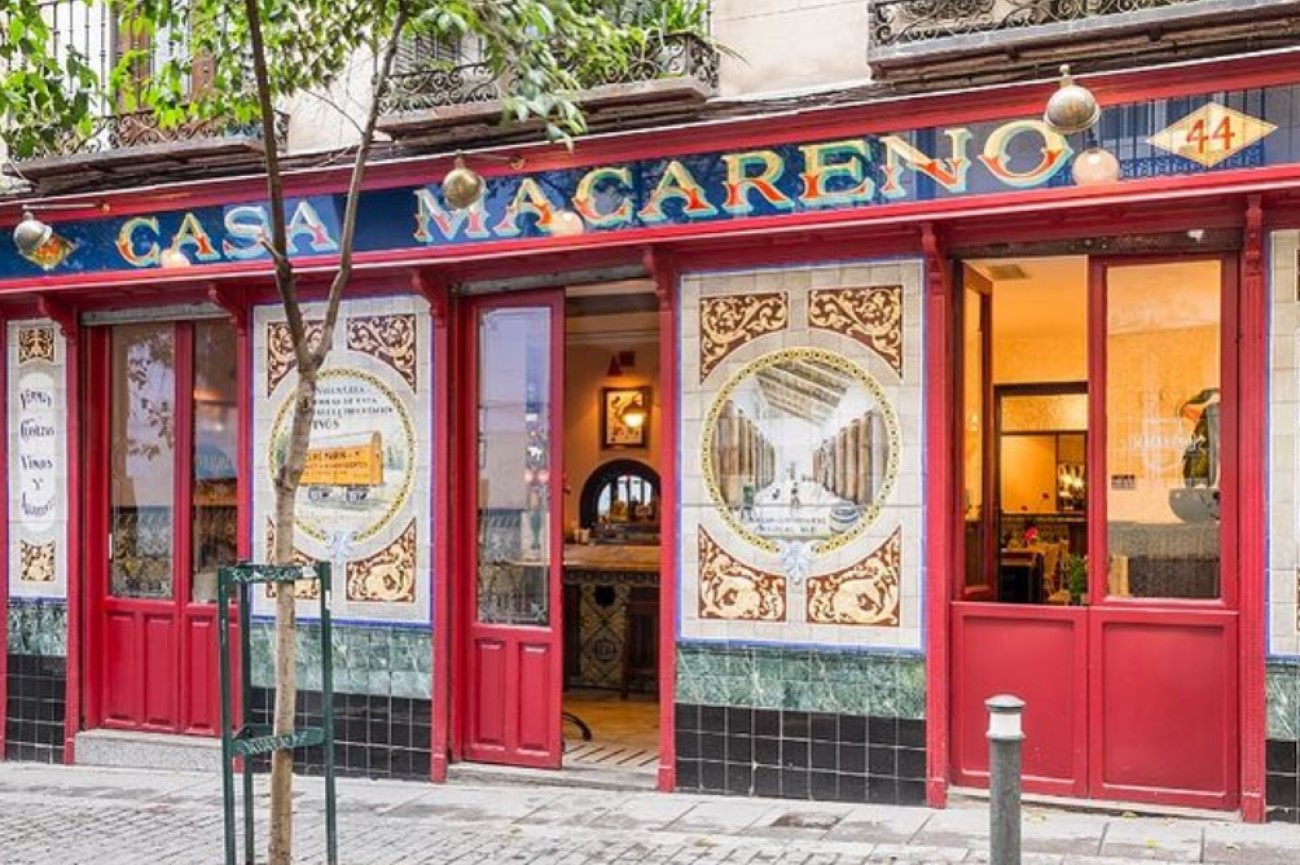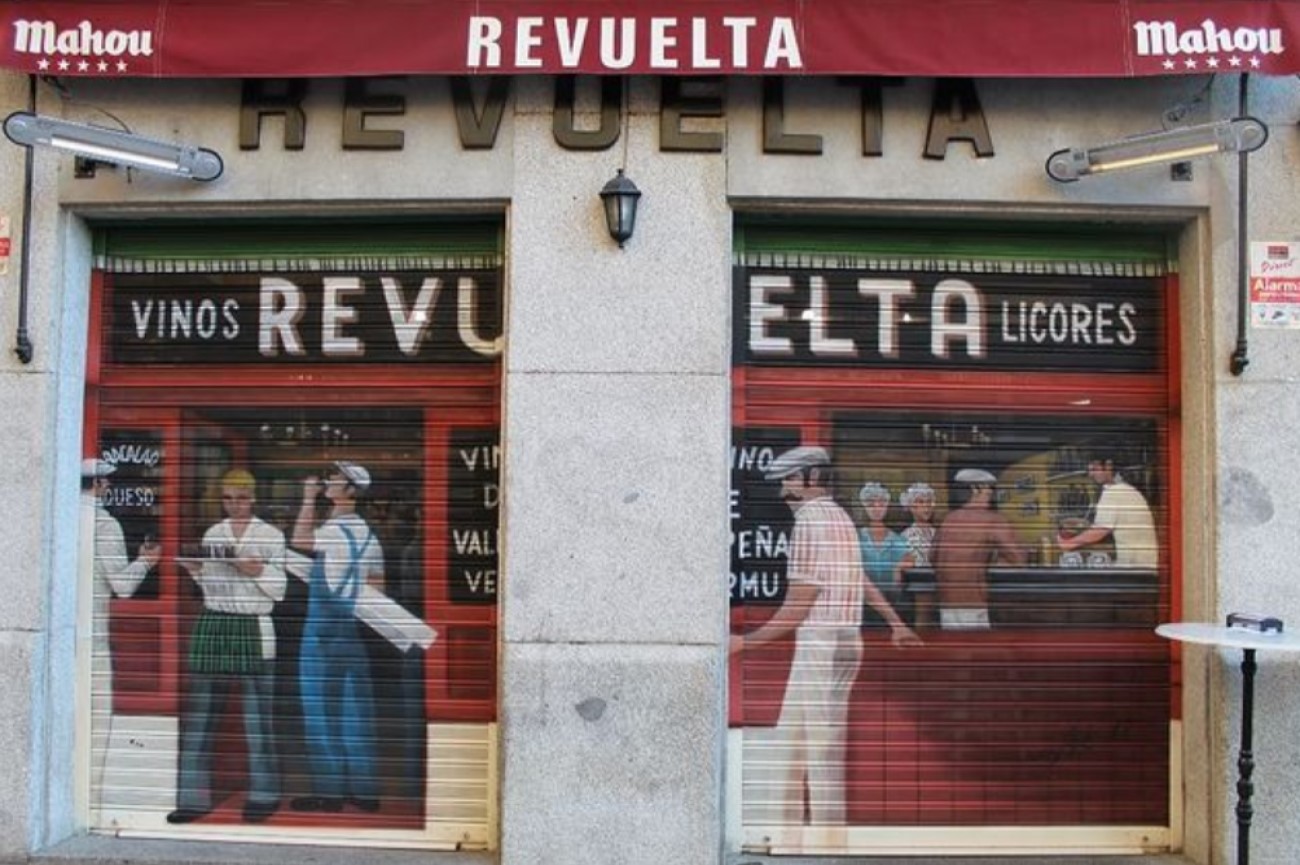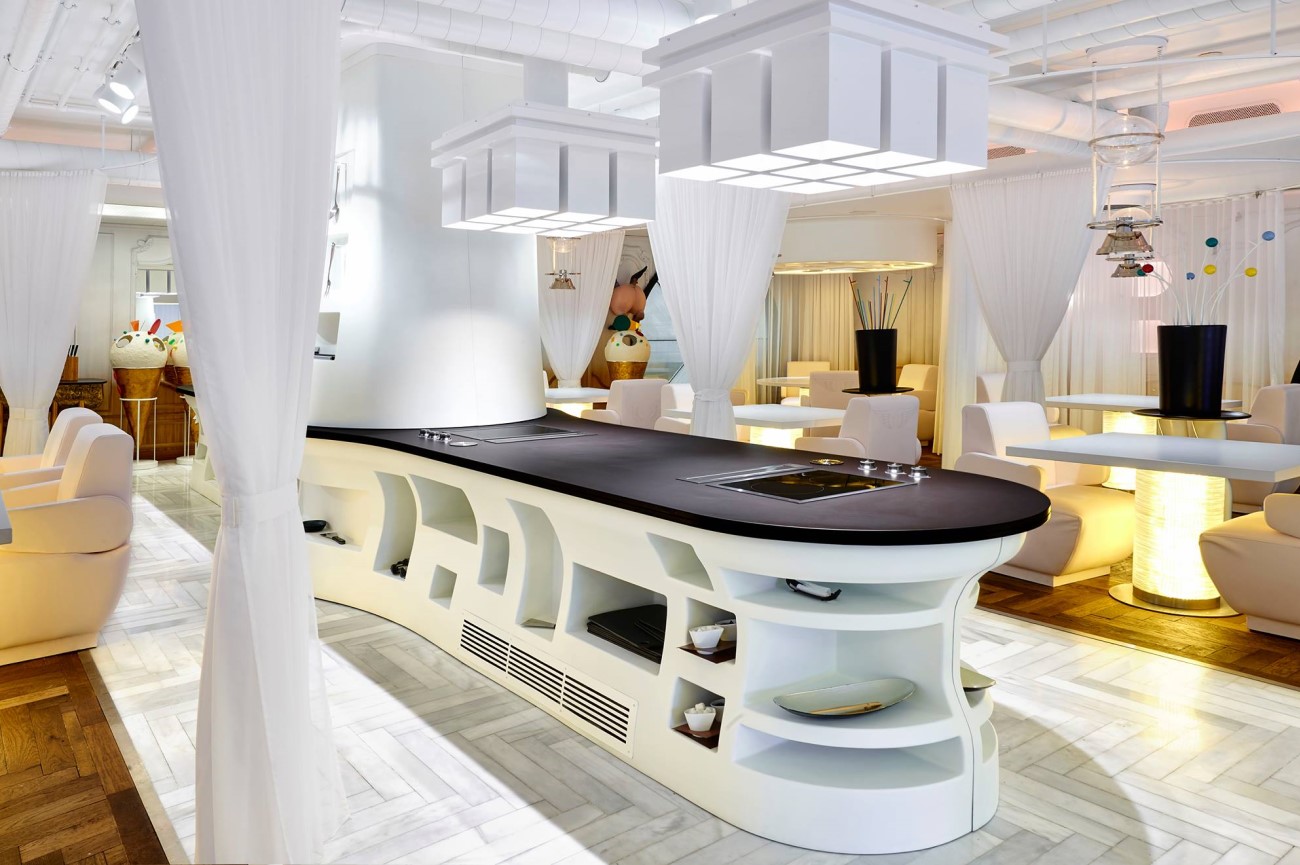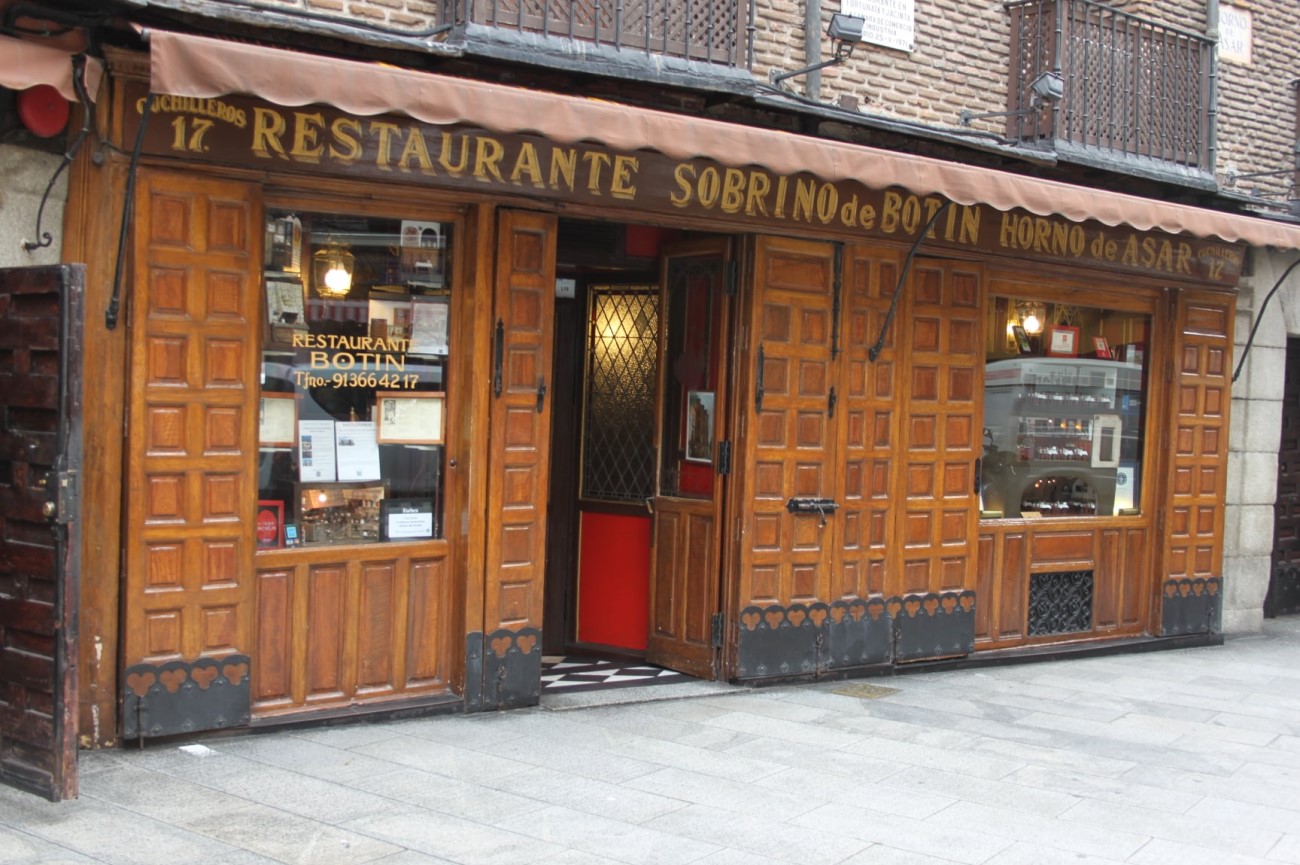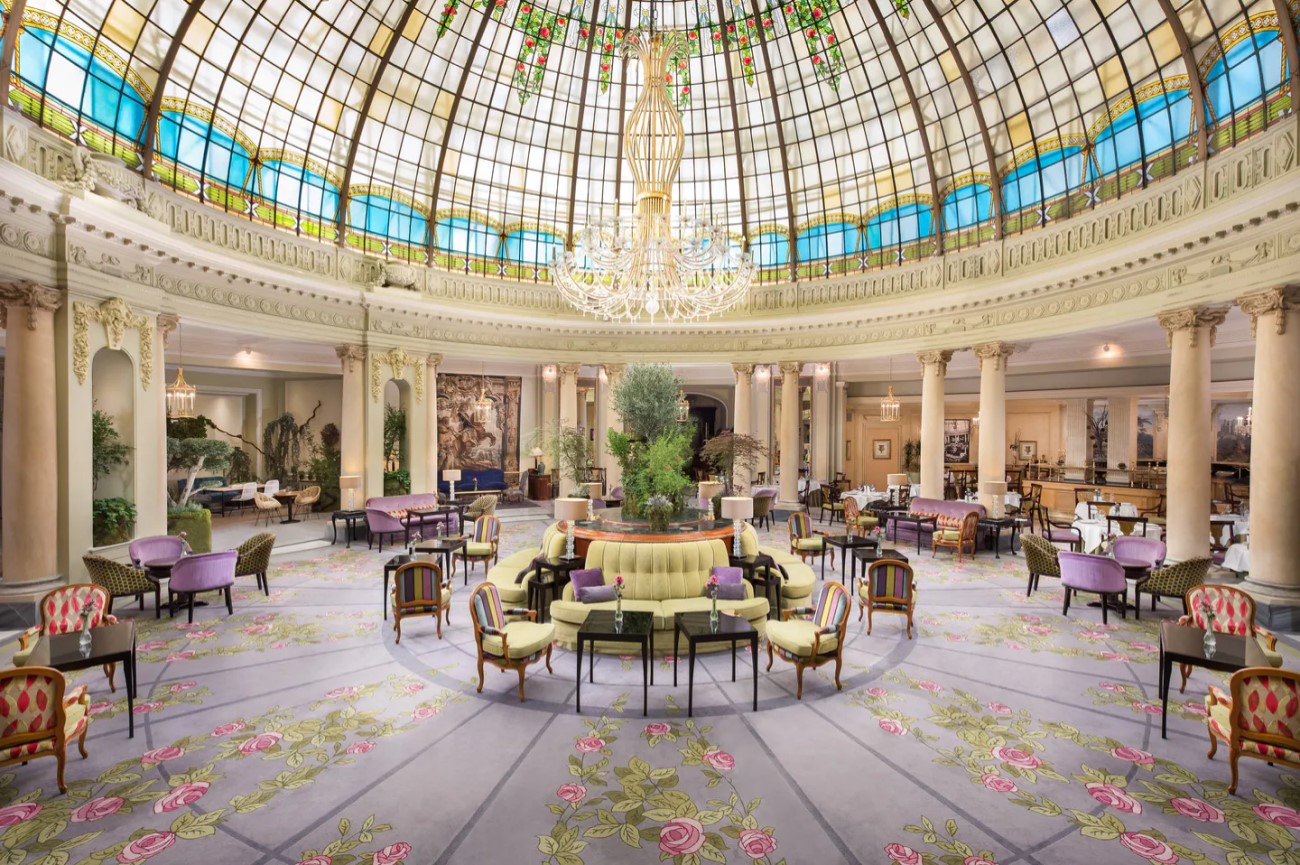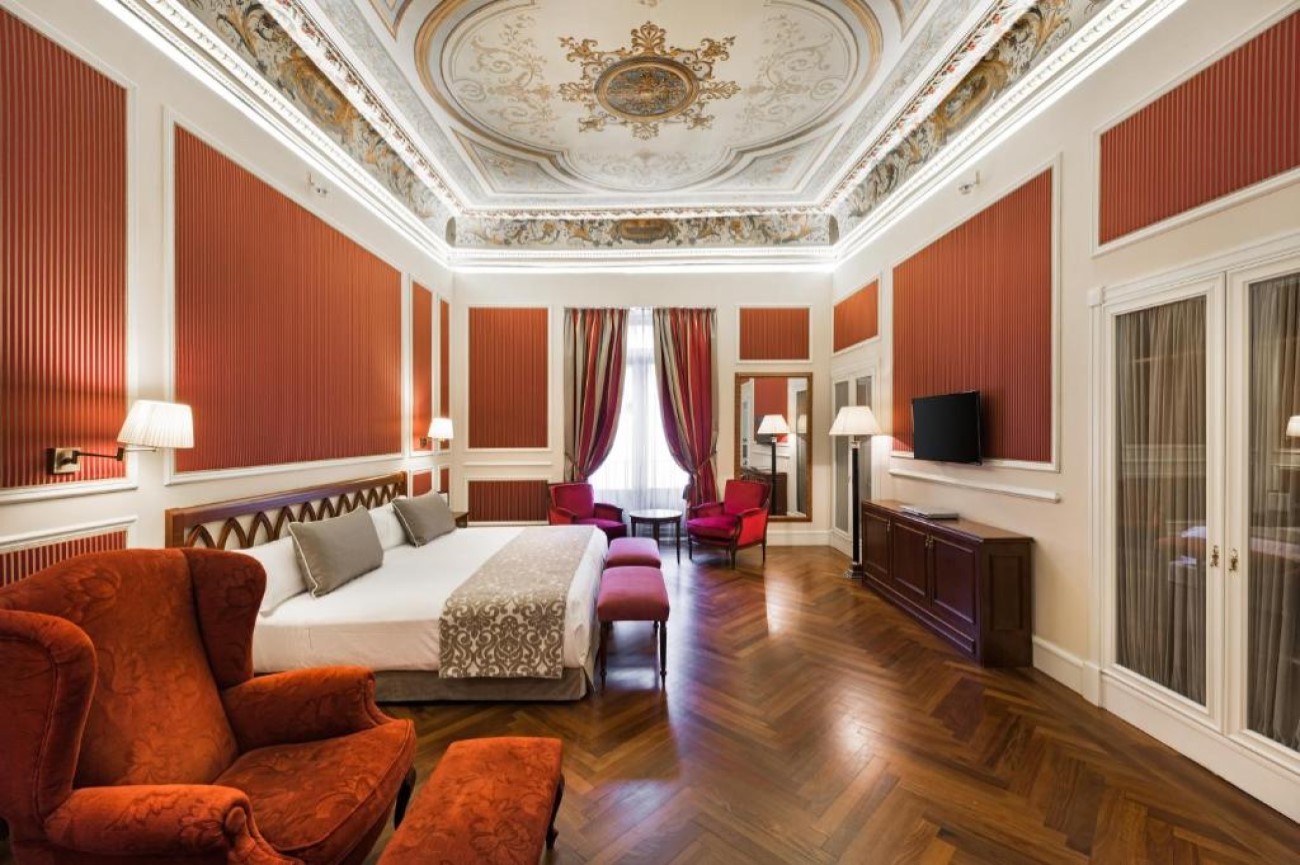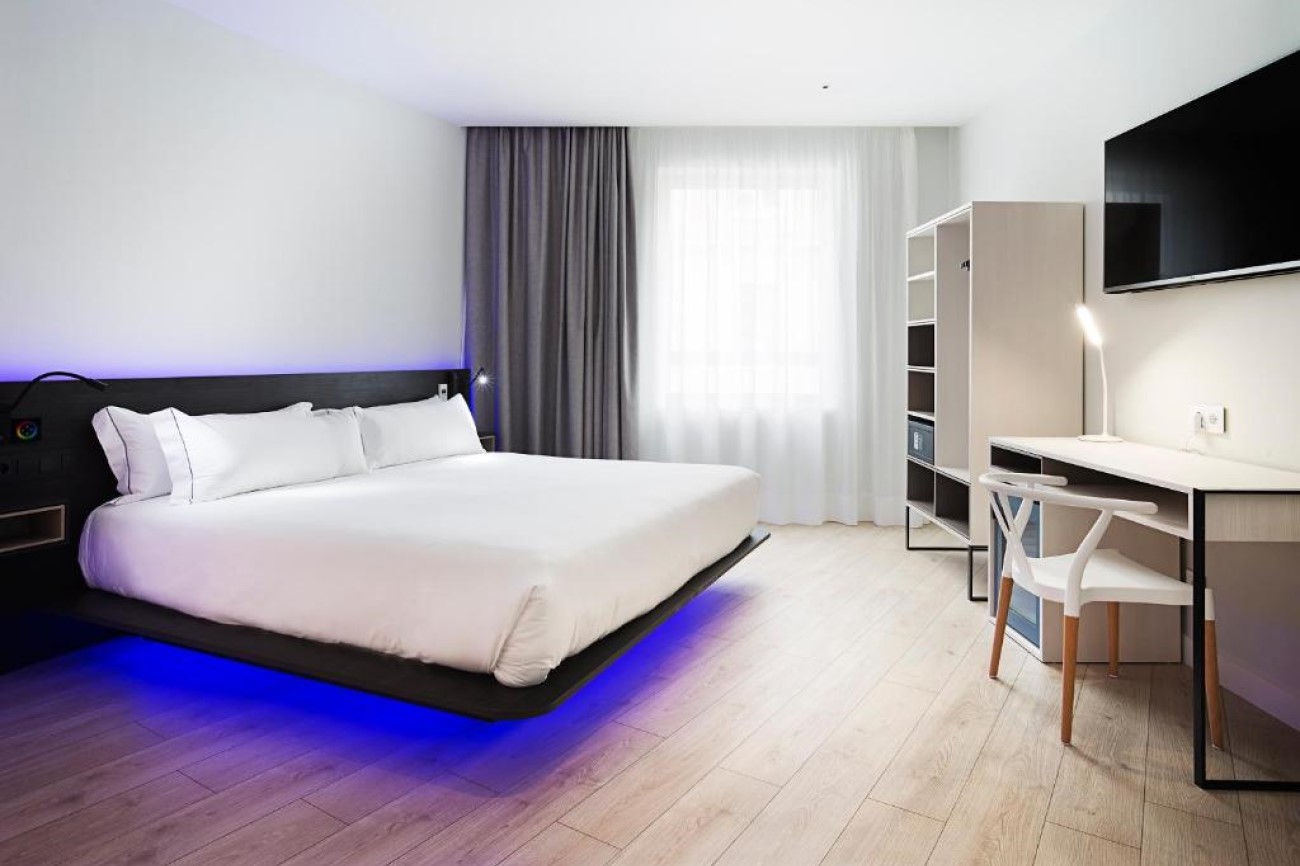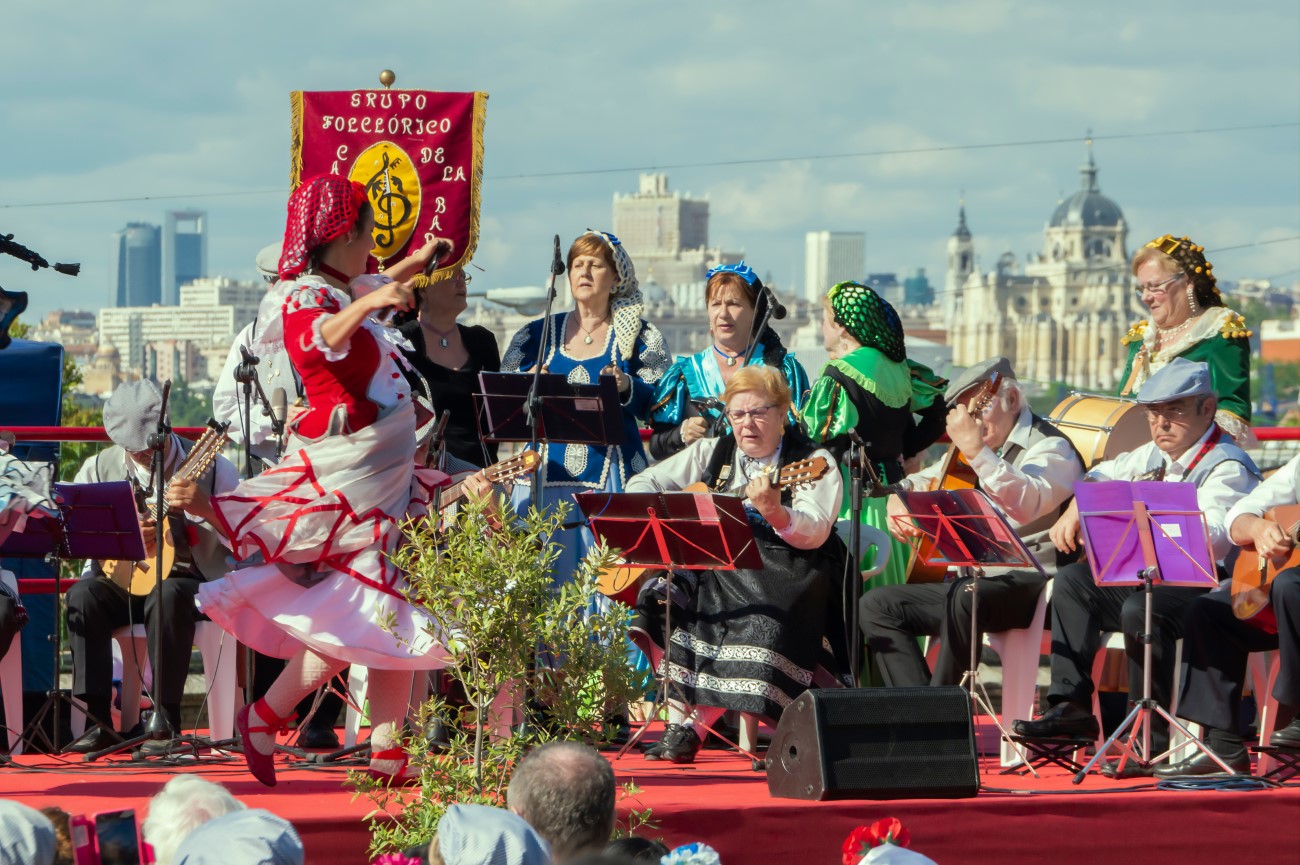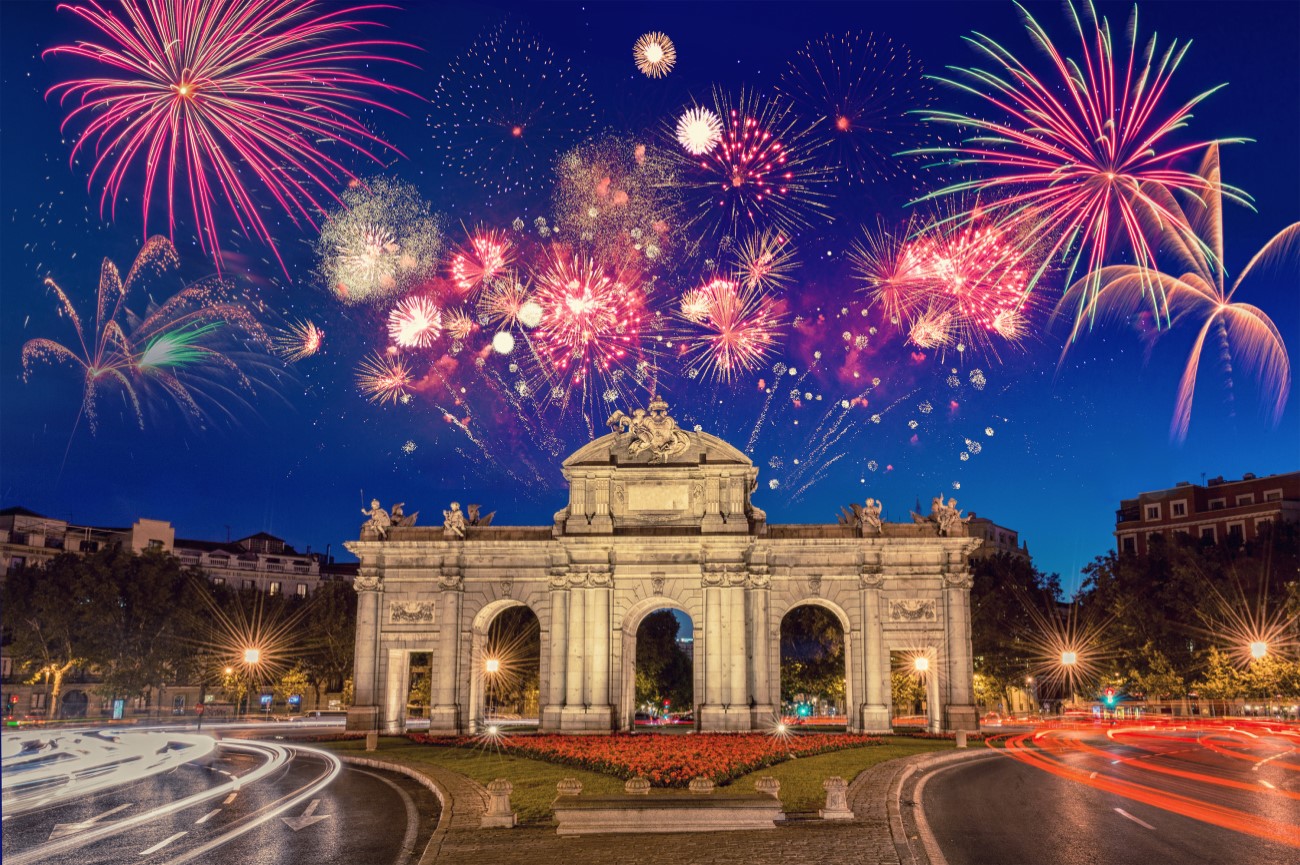Things to do in Madrid, Spain: 4-day itinerary
There are many reasons to visit Madrid. Some come for its stellar art museums. Others can’t get enough of the delicious tapas and non-stop partying. This is a city bursting with life, and you’ll feel it from the moment you arrive. Every day, crowds gather around its squares and boulevards for a late-night drink or to capture an impromptu flamenco performance.
Museums like the Prado or Reina-Sofia attract art enthusiasts from across the world, with classics by Spanish masters such as Goya and Picasso. But the Spanish capital has much more to offer, including a striking cathedral, a royal palace and delightful green spaces like the Sabatini Gardens or the Retiro Park.
Our 4-day itinerary below features the best things to do in Madrid. Beyond the iconic sights, you’ll get a chance to explore authentic Spanish neighbourhoods, visit local markets and discover the best sunset spots in the city.
Day 1

Morning: Plaza Mayor
As you arrive in Madrid, you can’t miss a visit to the Plaza Mayor. This is the city’s central square dating back to the 17th century. Amid the maze of narrow streets, Plaza Mayor stands out with its monumental features and lively atmosphere. Through the years, many events have taken place here, including bullfights, processions and even executions following the Spanish Inquisition. Things are more cheerful these days, with shops and restaurants occupying the arcades and Christmas markets taking over in the winter. The cafés can be a bit pricey, but it’s still worth coming here to capture the striking red buildings and the frescoed façades.
Almudena Cathedral
From the square, follow the exit towards Calle Mayor. Walk down the street, and you’ll soon reach the Catedral de la Almudena. The building fits perfectly with the classical style of the adjoining Royal Palace. Inside, it’s a little more modest, with only a few touches of colour decorating the altar and the ceilings. Construction began in 1879, but it was only completed in 1992, hence the modern feel. After touring the church, you can visit the museum, which gives you access to the dome. From here, you can enjoy a stunning view of the palace and other iconic city monuments.
Royal Palace of Madrid
Madrid is home to the largest Royal Palace in Europe. This imposing Baroque building has been the official residence of the Royal family since it was founded in 1735. The family still comes here for state ceremonies, but they’ve since moved to a more low-key location in Palacio de la Zarzuela. These days, the palace is open to the public. It’s so big that they only open a few rooms at a time. You can join a guided tour or go at your own pace. Either way, you’ll find a vast collection of Goya paintings, clocks and Stradivarius violins often used for concerts. Other highlights include the Throne Room with its red-velvet walls and fresco ceiling and the Gasparini Room with its lavish Rococo decor. Surrounding the north side of the palace are the Sabatini Gardens. Fernando García Mercadal designed this green oasis, dotted with fountains and statues of Spanish kings. For a while, the gardens were only accessible by the royal family, but since 1978 anyone is welcome to visit.
Afternoon: Plaza de Oriente
You’ll find this picturesque square in between the palace and the Teatro Real, the city’s iconic opera house. Architect Narciso Pascual Colomer designed Plaza de Oriente in 1844 following the orders of King José I. Once occupied by medieval houses, the square is now home to manicured gardens and a display of marble sculptures. In the middle of the plaza is a bronze statue of King Felipe IV on a horse inspired by a Velázquez painting.
Templo de Debod
From Plaza de Oriente, make your way to the Templo de Debod. This Egyptian temple dates back to the 2nd century BC and once stood in the ancient city of Meroë. It was gifted to Spain as a thank you for their help in saving the Abu Simbel temples. Get here in time for sunset, and you’ll see a stunning reflection in the small pool around the temple. The nearby park is also a popular spot for picnics and sports classes.
Teatro Real
Head back to the city centre to catch a show at the Teatro Real. There’s been a theatre here since 1708, but the building you see today was only inaugurated in 1850. The current neoclassical structure is the result of a series of renovations that took place in the 1990s. The theatre mainly hosts operas, but you can also see dance, concerts and even flamenco performances. Check the programme before you go, so you don’t miss a thing.
Day 1 - Madrid Tour Map
Day 2

Morning: Reina Sofia Museum
Spend your second day in Madrid exploring its iconic art museums. First off is the Reina Sofia Museum, renowned for its contemporary art collection. It’s here you’ll find Picasso’s infamous Guernica alongside its preparatory sketches. Beyond this masterpiece, you’ll also spot works by Joan Miró and Salvador Dalí. The collection covers anything from cubism to surrealism and pop art. It mainly revolves around Spanish artists, but there are a few exceptions, such as Francis Bacon, Max Ernst or Georges Braque.
Prado Museum
With a collection of over 7,000 paintings, Museo del Prado ranks among the best art museums in the world. Contrasting with Reina Sofia, Prado houses older pieces from Velázquez, Goya and other European masters. You can spend a whole morning here admiring these classics. Occupying a former palace, the museum first opened in 1819 with a small display of Spanish paintings held by the Royal family. These days, there are sections for French, British, German and Flemish masters, among others. Make sure to pick up a plan by the ticket office to avoid missing any highlights. These include Goya’s El tres de mayo and Las Meninas by Velázquez. Other famous artists on display include Rembrandt, Rafael and Hieronymus Bosch. In addition to the permanent collection, the Prado museum hosts temporary exhibits in the Edificio Jerónimos, where you’ll also find a bookshop and a café.
Retiro Park
After touring the museums, head over to the Parque del Buen Retiro, aka El Retiro. Once a private retreat for the royals, this large park opened to the public in the late 19th century. Step inside to admire the fountains, gazebos and statues of Spanish intellectuals. Within the park, there are also two palaces now used as exhibition spaces. There’s Palacio de Cristal, a striking glass and iron building nestled amid the trees and the Palácio Velazquez with its neoclassical red-brick façade. You can visit these galleries, paddle along the artificial lake or simply relax on the grass with a book.
Puerta de Alcalá
Just a few steps from the park, you’ll find the Puerta de Alcalá. This grand gate used to be the main entrance to the city. Anyone coming into Madrid had to pass through here when the city was surrounded by walls. The first Puerta de Alcalá was erected here in 1599, but the one you see today dates back to 1764.
Afternoon: Plaza de Cibeles
From Puerta de Alcalá, take a walk towards the Plaza de Cibeles. This imposing square stands out with its surrounding neoclassical buildings. The main attraction is the Cibeles Palace, home to the City Council, a fine dining restaurant and a cultural centre with a fantastic 360º viewpoint. Other noteworthy sights include the Palacio de Linares and the Banco de España.
Gran Vía
Follow the Calle de Alcalá, and you’ll soon find your way to the bustling Gran Vía. This is Madrid’s grand boulevard, flanked by belle-époque buildings that house offices, shops and hotels. Among the most impressive structures is the Edificio Metrópolis, with its striking winged victory statue. Also worth capturing are the Edificio Carrión, the Edificio Grassy and the Edificio Telefónica.
Círculo de Bellas Artes
Just a bit off the Gran Vía is the Círculo de Bellas Artes. This cultural association hosts exhibitions, concerts and film screenings throughout the year. However, it’s the bar on the rooftop that attracts the most visitors. Take the lift up to the 7th floor, and you’ll be rewarded with stunning city views. The entrance fee includes access to the exhibitions and the rooftop, so make sure to arrive early to make the most of it. Long queues are common in the summer.
Puerta del Sol
Puerta del Sol is the city’s central meeting spot. Before a night out, many gather around the statue with the bear and the strawberry tree, a Madrid icon. Several transport lines cross through here, so the area is always busy. During New Year’s Eve, locals head here to hear the clock strike midnight in front of Casa de Correos.
Day 2 - Madrid Tour Map
Day 3

Morning: Palacio de Fomento
Our Madrid tour continues at the Paseo de la Infanta Isabel. Here you can capture the Palacio de Fomento. Erected in the 19th century, this impressive palace is now the headquarters of the Ministry of Agriculture. With its bright-white columns and bronze sculptures rising above the roof, it's become one of the city's architectural jewels.
CaixaForum
Next stop is the CaixaForum. This modern art gallery draws visitors with its lush vertical garden. Inside, you’ll find a bookstore, a café and a large exhibition area that showcases anything from photography to multimedia displays. The building occupies a former power station, but it has been completely renovated, following a design by Swiss architects Herzog & De Meuron.
Madrid Botanical Garden
Just across the road from CaixaForum is the entrance to Madrid’s Botanical Garden. This quiet green oasis is home to over 5,000 plant species spread between the outside and the greenhouse. The original garden was near the Orchard of Migas Calientes, but it moved here in 1781. Beyond the live plants, you’ll also find a remarkable herbarium and a library featuring a series of books and botanical drawings.
Thyssen-Bornemisza Museum
Part of the infamous Triangle of Art, the Thyssen-Bornemisza Museum is a must-see in Madrid, along with the Museo del Prado and Reina Sofia. The museum houses an art collection started by Baron Heinrich Thyssen-Bornemisza. Later completed by his family, it now includes around 1,000 paintings. Degas, Renoir, Van Gogh and Dalí are a few artists you’ll see on display. Thyssen may be smaller than the other museums, but you can still capture a wide range of styles here, from the 13th to the 20th century. For a chronological tour, start from the top floor and make your way down.
Mercado San Miguel
From the museum, take a slow walk to the Mercado San Miguel. This is one of the oldest markets in Madrid, established in 1916. Beyond its glass walls is now a lively gourmet market with a series of food stalls run by local and international chefs. Here you can sample anything from tapas to fresh seafood and rice dishes. Don’t miss the delicious tortillas at Picolisto, the fishy pintxos at Casa de Bacalao or the cured meats at Carrasco Ibéricos. To pair with your meal, you can order a glass of Asturian cider.
Afternoon: Barrio de la Latina
Spend the afternoon exploring the old neighbourhood of La Latina. Here you’ll find a variety of small boutique shops and tapas bars, especially down Calle de la Cava Baja. There are also stunning churches like San Andrés, San Pedro El Viejo and San Francisco El Grande. If you happen to be here on a Sunday, don’t miss El Rastro, one of the largest flea markets in Spain. The main stalls are around the Calle de la Ribera de Curtidores, but there are many gems to discover in the side streets too.
Lavapiés
Close to La Latina is the multicultural district of Lavapiés. Here alternative art galleries mix with international restaurants and edgy bars. Check out the latest exhibitions at Tabacalera or La Casa Encendida before stopping for a mini burger at Los Titos or a cocktail at Savas. This is also where you’ll find many of the city’s clubs, in case you feel like staying up a little longer.
Mercado Antón Martin
Still within Lavapiés is the Mercado Antón Martin. It’s hard to miss this local market with its bright orange walls and the large mural by Irish artist Fin DAC. Inside, you can sample several dishes from Spain to Italy and Taiwan, including vegan specialities. There are also small grocery vendors and a flamenco dance school on the top floor.
Flamenco show
While flamenco has its origins in Andalucia, many artists have started their careers in Madrid. This makes it a perfect place to catch a traditional show. There are many flamenco venues in Madrid, but we recommend Corral de la Morería, Cardamomo or Las Carboneras. Most of these also offer dinner or small nibbles.
Day 3 - Madrid Tour Map
Day 4

Morning: Sorolla Museum
There’s no lack of museums in Madrid. If you have a few more days in the city, make sure to visit the Museo Sorolla. This museum occupies the former house of Joaquín Sorolla, a Valencian artist famous for its bright coastal paintings. The ground floor features a charming Andalusian courtyard, which leads to a room filled with Sorolla’s drawings. Upstairs there are even more rooms, including a salon, dining areas and studio spaces used by the artist. Most of these have been kept in their original form, making this one of the best-preserved house-museums in Europe. Beyond paintings, you’ll also find a series of items acquired by Sorolla through the years, including ceramics, jewellery and sculptures.
Malasaña
From the museum, hop on the metro towards Malasaña, one of the trendiest neighbourhoods in Madrid. Learn more about the city’s history at the Museo de la Historia de Madrid before heading down to the shops at Calle Fuencarral or a bite to eat at the Mercado San Antón.
Plaza De La Villa
After exploring Malasaña, take a walk down to Plaza de la Villa. This small square houses some of the oldest buildings in the city, most of which date back to the 17th century. Among them is the Casa de la Villa, which served as Madrid’s town hall before it moved to Plaza Cibeles. Other eye-catching features include the brickwork tower of Casa de los Lujanes and the plateresque façade of Casa de Cisneros.
Afternoon: Real Basílica de San Francisco el Grande
The Basílica de San Francisco el Grande is one of the many churches located within the district of La Latina. If you didn’t make it here the day before, now you have plenty of time to marvel at the stunning frescos, stained glass windows and paintings made by renowned Spanish artists like Francisco Goya. There’s been a religious site here since at least the 13th century, but the church you see today was only completed in 1784. The basilica is mostly Neoclassical in style, but the chapels reflect different periods from the Baroque to the Rococo. After touring the church, you can also visit the small museum, where you’ll find a series of religious paintings.
Atocha train station
Atocha is Madrid’s central railway station. This striking building combines brickwork with a marvellous glass-and-iron roof. In 1992 architect Rafael Moneo gave a new life to Atocha by adding a lush tropical garden in the middle of the station. It contains over 7,000 plants along with a small pond with turtles. You can take many trains from Atocha, but one of the highlights is the Cervantes train, which takes you on a dramatized trip to Alcalá de Henares, where Cervantes was born.
Cerro del Tío Pío
End your last day in Madrid atop the Cerro del Tío Pío. This hillside park is one of the best places to watch the sunset in the city. To get here, you can hop on the metro directly from Atocha, which takes about 30 minutes. Beyond the viewpoint, the park also features sporting equipment, a cycle path and a kiosk.
Day 4 - Madrid Tour Map
Other things to see in Madrid
- Casa de Campo: With over 1,700 hectares, Casa de Campo is the largest urban park in Madrid. It sits along the banks of the Río Manzanares, surrounded by oaks and pine trees. Once a hunting ground for the royals, it’s now a favourite spot for locals looking for a nature break close to the city. There are several trails to follow on foot or bike, along with tennis courts and a swimming pool. The park is also home to the city zoo and an amusement park. Reminders of its royal heritage can still be seen in places like the Palace of Vargas or the Culebra Bridge. For the best views of the park, you can hop on the cable car departing from Parque del Oeste.
- Matadero: This former slaughterhouse has been converted into a lively cultural complex. Visitors are drawn by the neo-Mudejar pavilions, which welcome various events from dance performances to theatre and cinema sessions.
- Santiago Bernabéu Stadium: Football lovers can’t miss a visit to Estadio Santiago Bernabéu. It’s the home of Real Madrid and one of the largest stadiums in Spain, which can accommodate up to 80,000 fans. The tour starts in the stands and continues onto the dressing rooms, the players’ tunnel and the pitch, ending with a visit to the trophy room.
- Barrio de Salamanca: The district of Salamanca has a luxurious feel, with its designer shops and Michelin-starred restaurants lining the Golden Mile. Come here for an afternoon of shopping, sample gourmet delicacies or take a tour through one of its museums like the Museo Arqueológico Nacional or Museo Lázaro Galdiano.
- Barrio de las Letras: Known as the Literary Quarter, this neighbourhood gained its nickname for being the home of the Spanish writer’s elite in the 17th century. Cervantes, Lope de Vega and Quevedo all passed through here. Visit the museum dedicated to Lope de Vega, attend a play at Teatro Español or enjoy one of the many flamenco performances hosted in a local tablao.
- Parque de El Capricho: On the outskirts of Madrid, you’ll find this 18th-century park built by the Duke and Duchess of Osuna. Many artists frequented El Capricho, including painter Francisco de Goya and writer Leandro Fernández de Moratín. Today, it’s one of the city’s best-kept secrets. Some of the garden’s iconic features include the old palace, a labyrinth and the bandstand.
- Monasterio de las Descalzas Reales: This large monastery sits right amid the city centre. Beyond its Plateresque façade is a magnificent display of frescos, sculptures and tapestries. The monastery occupies a former palace that belonged to Emperor Charles V. His daughter Joanna of Austria decided to convert the space into a convent for Poor Clare nuns. The façade and the Renaissance stairway are among the original elements. Other things were added in the 18th century by architect Diego de Villanueva.
- Naval Museum: Set along Paseo del Prado, this museum showcases the history of the Spanish Navy. Inside, you’ll find over 10,000 items, including weapons, ship models, flags and uniforms. The highlight, however, is the Mappa Mundi, a remarkable world map designed in the 1500s.
- La Neomudejar: This urban art gallery sits just opposite the Atocha Train Station. It welcomes anything from video-art festivals to exhibitions and creative talks hosted by the artists in residence.
- Railway Museum: The disused station of Madrid-Delicias turned into a railway museum in 1984. Visitors can still admire the stunning 19th-century cast-iron structure along with a collection of steam locomotives and old carriages. It’s worth coming here for the Mercado de Motores, a small craft market with stalls spread along the old tracks. You can also count on live music and plenty of street food.
Day Trips from Madrid
- Segovia: With its Romanesque churches, medieval walls and fairytale palace, Segovia has earned its Unesco-World heritage title. As you approach the city, you can’t miss the ancient Roman aqueduct rising above Plaza Azoguejo. Other highlights include the Alcázar of Segovia and the Gothic cathedral.
- Toledo: Sitting on a hill overlooking the Tagus river is Toledo, the capital of the Castilla-La Mancha region. Toledo was once known as the city of three cultures, thanks to its diverse community of Muslims, Christians and Jewish. You’ll still find traces of this cultural intersection in the city’s monuments, which include mosques, synagogues and churches. Toledo was also home to the Greek painter El Greco, and there’s a museum dedicated to his work in the Jewish quarter.
- El Escorial: About an hour away from Madrid, amid the Sierra de Guadarrama, you’ll find the town of San Lorenzo de El Escorial. Most people come here to see the large Renaissance Royal Monastery. Built as a residence for King Philip II, El Escorial became a UNESCO site in 1984. Tickets give you access to the main building, as well as the chapels and the surrounding gardens.
- Ávila: Ávila’s medieval walls can be spotted from a distance with its rounded turrets and watchtowers. These well-preserved fortifications have circled the city since the 12th century. Visitors can walk along the battlements or enjoy the views from Los Cuatro Postes. Other noteworthy sites include the Catedral del Salvador and the Convento de Santa Teresa, a popular pilgrimage site.
- Chinchón: Only a few miles south of Madrid is the charming village of Chinchón. The main attraction is the Plaza Mayor, a medieval square surrounded by houses with colourful wooden balconies. Many of the town’s events take place here, including the Easter ceremonies.
- Aranjuez: Aranjuez draws visitors with its magnificent French-style palace. For years, this was a favourite retreat for the Spanish royalty. It’s worth stepping inside to admire its lavish rooms, which showcase anything from porcelain to luxurious vessels used to sail down the Tagus river. Outside, the gardens stand out with their fountains and colourful flower beds.
Top things to do with kids in Madrid
Madrid is a lively capital city full of family-friendly attractions. There are many ways to keep the kids entertained, from sampling the local cuisine at the markets to exploring the city’s parks and playgrounds. Madrid is blessed with plenty of green spaces where kids can run free, from El Retiro to Madrid Río and Casa de Campo. This last one is home to several sights, including an amusement park and a zoo aquarium.
Visiting the art museums can be tiresome, but you can book fun interactive tours adapted for children, like a treasure hunt through the Prado. Young kids will love hopping aboard the old trains at the Railway Museum or spotting the giant dinosaur skeleton at the National Museum of Natural Sciences. For football fans, the Real Madrid stadium is a must-visit. A bit further out is Warner Bros Park, a large amusement park with attractions for the whole family.
Where to eat in Madrid
You could do a culinary tour of Spain without leaving Madrid. The city is home to a variety of restaurants specialising in anything from Galician octopus to Andalusian gazpacho. Of course, there is room for some local delicacies too. Traditional dishes include the Cocido Madrileño, a hearty pork stew typically served in winter, and the bocadillo de calamares, a fried squid sandwich. For a sweet treat, nothing beats a plate of churros with hot chocolate. People tend to eat late here, so keep that in mind when heading out for a meal. Below are some of the best places to eat in Madrid:
- Madrid Food Markets: For a taste of the local cuisine, there’s nothing better than a visit to the local markets. In the city centre, facing the Plaza Mayor, is the Mercado San Miguel. This is the city’s most famous market, but there are others that also deserve a visit like Mercado Antón Martín, Mercado de San Ildefonso and Mercado de San Fernando.
- Chocolatería San Ginés: You’ll find this century-old café near the Puerta del Sol. It’s renowned for its delicious churros and chocolate combo, which draw both locals and tourists.
Tapas Bars and Traditional Restaurants
- La Taberna Sanlúcar: Located in the La Latina neighbourhood, this Spanish tavern serves a variety of tapas typical from Andalucia. Expect a selection of cold tapas like the salmorejo soup or the tortillitas de camarones (shrimp fritters), all paired with a great selection of wines.
- Casa Toni: This unassuming bar in Calle de la Cruz serves some of the best tapas in town. It specialises in seafood and offal dishes. Don’t miss the cuttlefish and the crispy pig ears.
- Casa González: Open since 1931, Casa González is both a gourmet shop and a tapas restaurant. Inside, you can enjoy a glass of wine alongside a selection of cured meats and cheeses. If you’re planning a picnic in Madrid, this is the perfect place to source your ingredients.
- Casa Macareno: This traditional restaurant stands out with its tiled-covered walls. The menu features small tapas to share, such as croquettes, pickles and canned goods, as well as hearty meals like the slow-cooked suckling pig. There's also a section for gourmet treats featuring old classics like the huevos rotos with prawns or the Galician octopus.
- Casa Revuelta: If you’re around the old town, make sure to visit this lively tapas bar. The place is small, so many people end up eating outside. Highlights include the buñuelos de bacalao (salt cod fritters) and the slow-stewed tripe.
Fine Dining Restaurants
- DiverXO: Chef Dabiz Muñoz runs this three-Michelin-starred restaurant on the outskirts of Madrid, near the football stadium. Expect a creative fusion of Spanish dishes with an Asian touch. Muñoz has been considered one of the best chefs in the world, and this is the place to sample his innovative cuisine. Reservations should be made a month in advance through the restaurant’s website.
- Sobrino de Botín: Established in 1725, Sobrino de Botín is the oldest restaurant in the world. Visitors are drawn by its rustic interior, but the food remains the secret for its long-standing success. The highlight is the cochinillo asado, suckling pig cooked in a wood-fired oven. Botín also appears in many novels set in Madrid, like The Sun Also Rises by Ernest Hemingway.
- Paco Roncero Restaurante: Housed inside a striking 20th-century building, this Michelin-star restaurant is named after its chef, Paco Roncero. Sitting on the top floor, the restaurant offers stunning city views. The tasting menus present traditional Spanish dishes with an avant-garde twist.
Where to stay in Madrid
- The Westin Palace (5 stars): This luxurious hotel sits right next to Madrid's infamous art museums. Commissioned by King Alfonso XIII, it has been welcoming guests since 1912. As you step inside, you can't help but marvel at the splendid stained-glass copula above the lobby. Guests can enjoy a variety of restaurants or sip a cocktail at the Museo Bar, once frequented by Dalí and Hemingway.
- Hotel Catalonia Las Cortes (4 stars): Located in the old town, this boutique hotel provides the perfect base to explore the city’s main attractions. It occupies a classical 18th-century building that was once home to the Duque of Noblejas. Many of the rooms still feature the original ceiling frescos.
- B&B Hotel Madrid Centro Puerta del Sol (3 stars): If you’re looking for a budget-friendly option in the city centre, this B&B is a great alternative. It has 74 rooms, some of which feature small balconies with views of Puerta del Sol.
Best time to visit Madrid
The best time to visit Madrid is around May or September when the temperatures are milder. You’ll also experience fewer crowds during these months. Summer is the busiest season for tourists. However, the extreme heat can make it harder to explore the city. If you want to catch some traditional festivals, and don’t mind the high temperatures, it’s worth coming around August. Winter is a good alternative if you’re on a budget, as the hotel rates tend to be much lower.
Madrid Festivals
- San Isidro: Every year around the 15th of May, Madrid celebrates its patron saint with a series of cultural events. Locals dress up in traditional costumes, and people gather outside to see concerts and colourful street parades. The festivities also include one of the biggest bullfighting events in the world. Matadors from across Spain come to Madrid to perform at the city’s bullring, Las Ventas.
- La Paloma: Madrid comes alive in August with a series of street parties. It begins with San Cayetano, which takes over the Rastro and Embajadores neighbourhood, then San Lorenzo in Lavapiés and finally La Paloma around La Latina. During the whole month, you’ll see plenty of people dancing and dining outside.
- Nochevieja: On December 31, thousands gather around Puerta del Sol to welcome the New Year, while others tune in from home. As the clock strikes midnight, people eat a grape for every chime. This is meant to bring good luck for the upcoming year.


